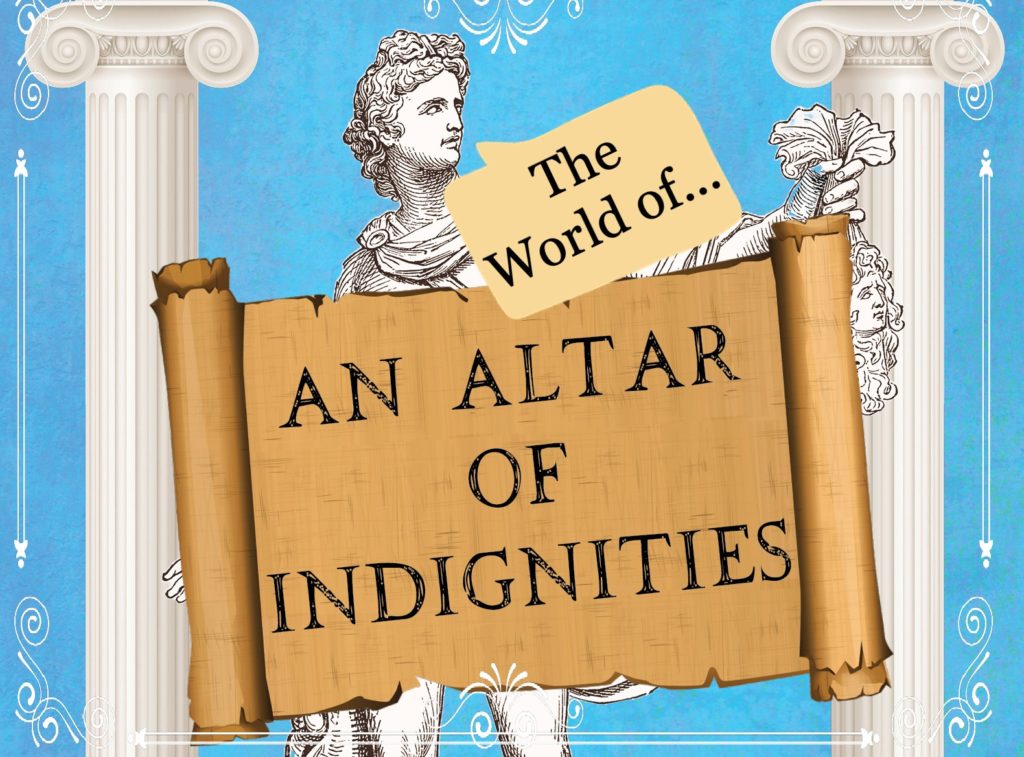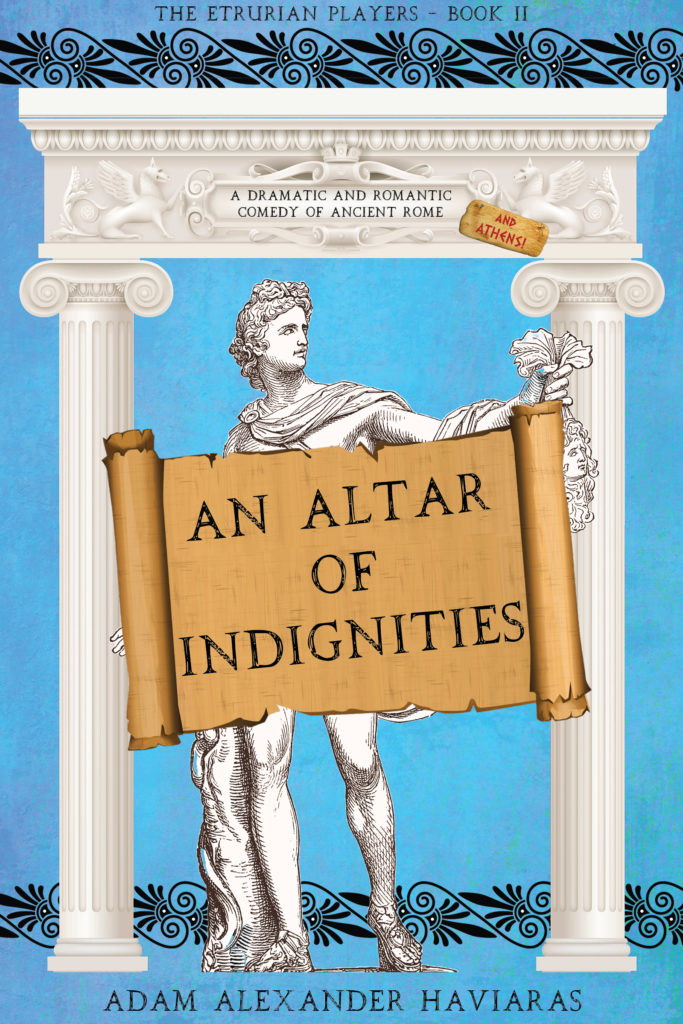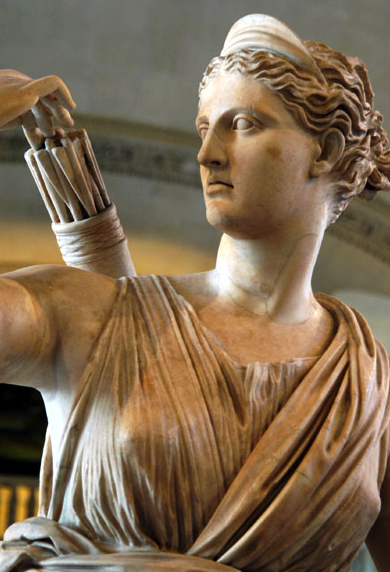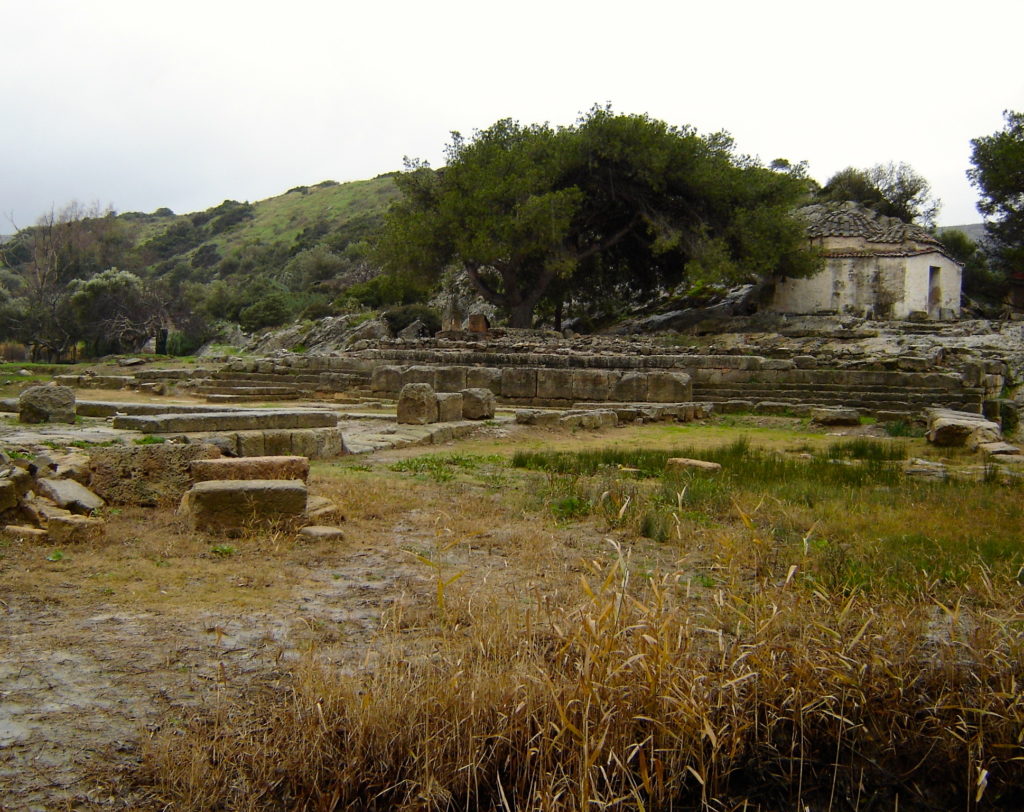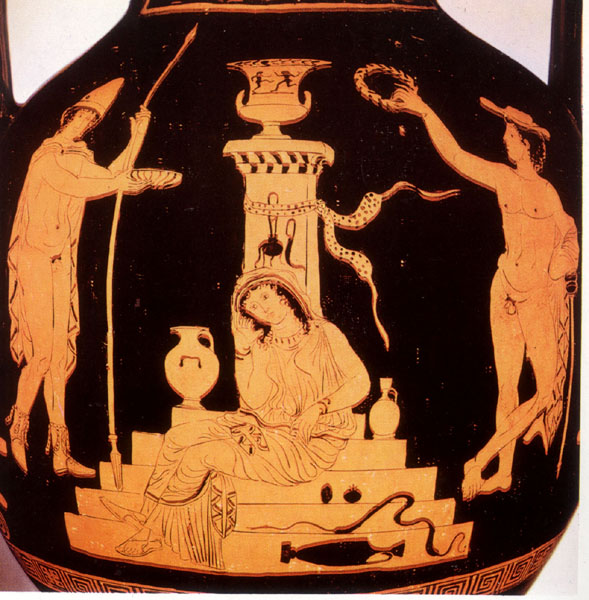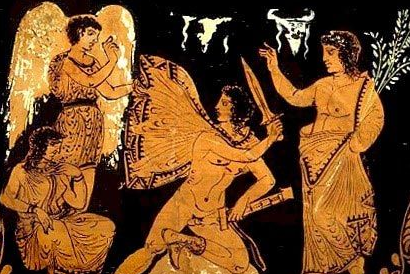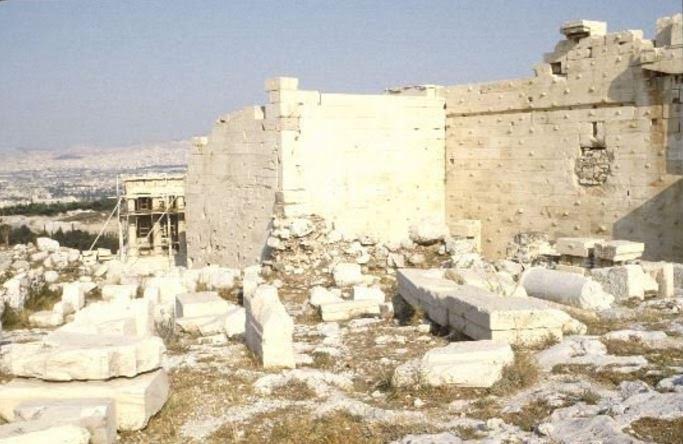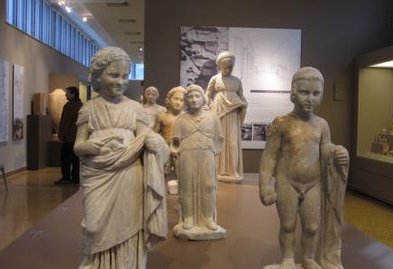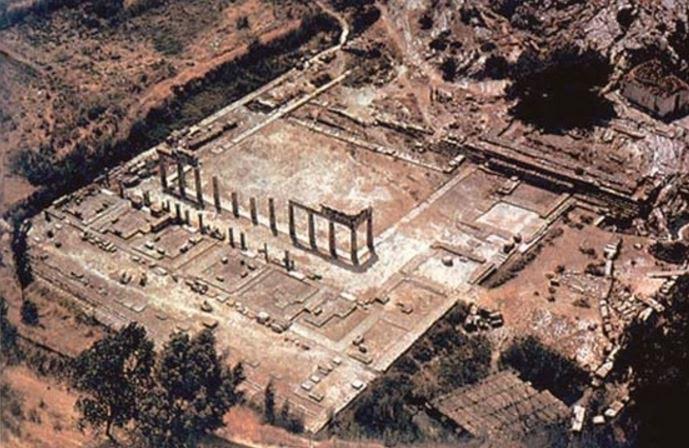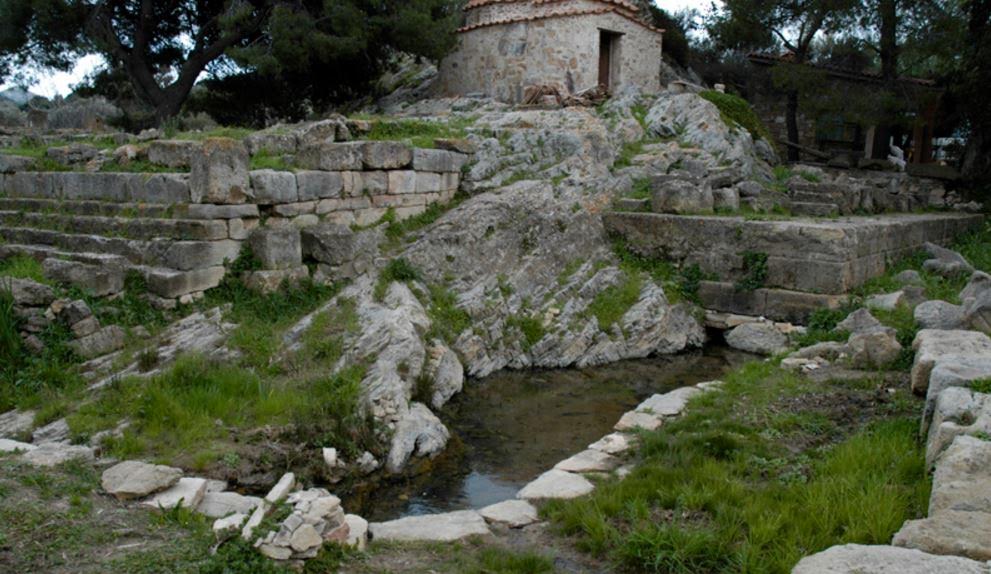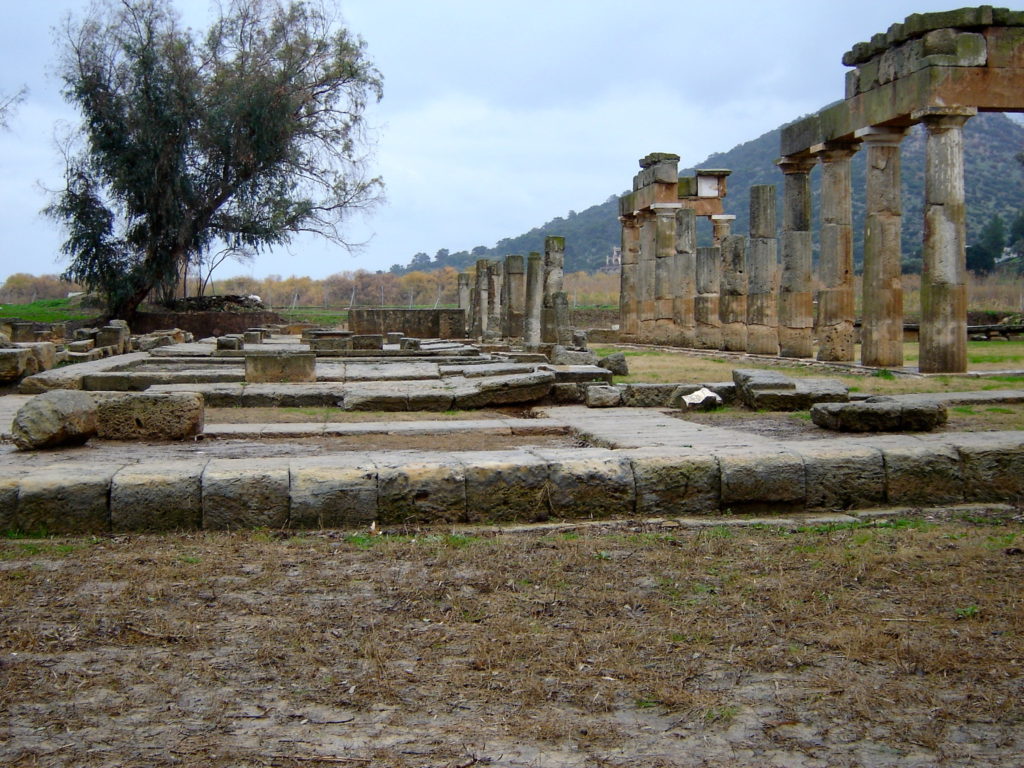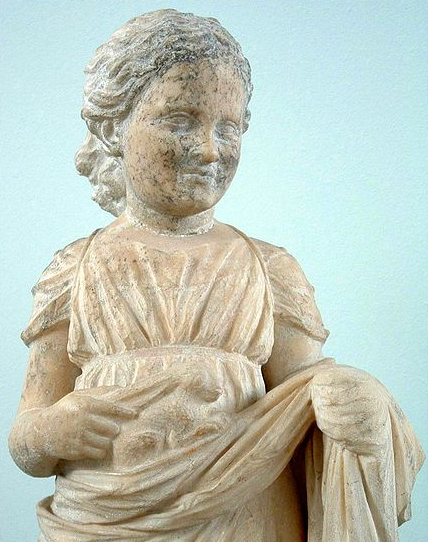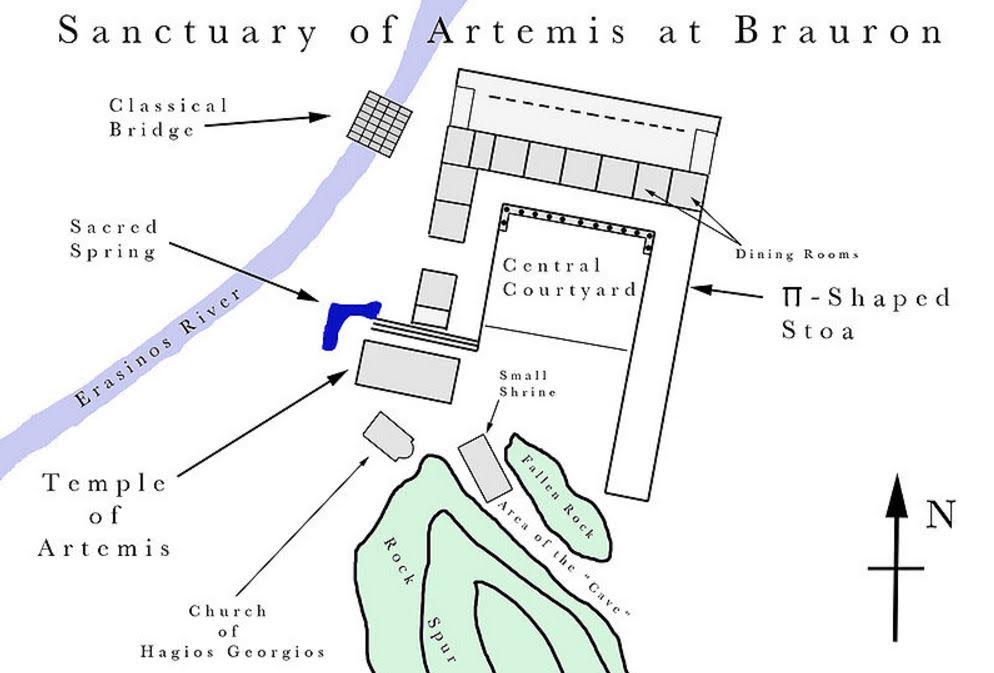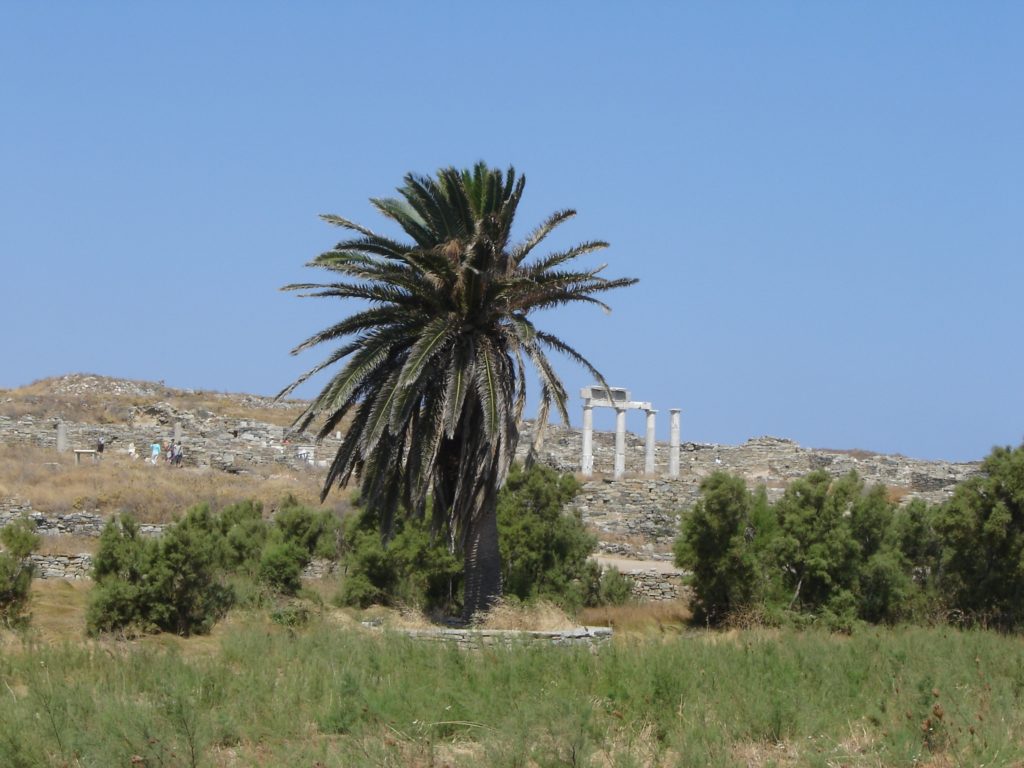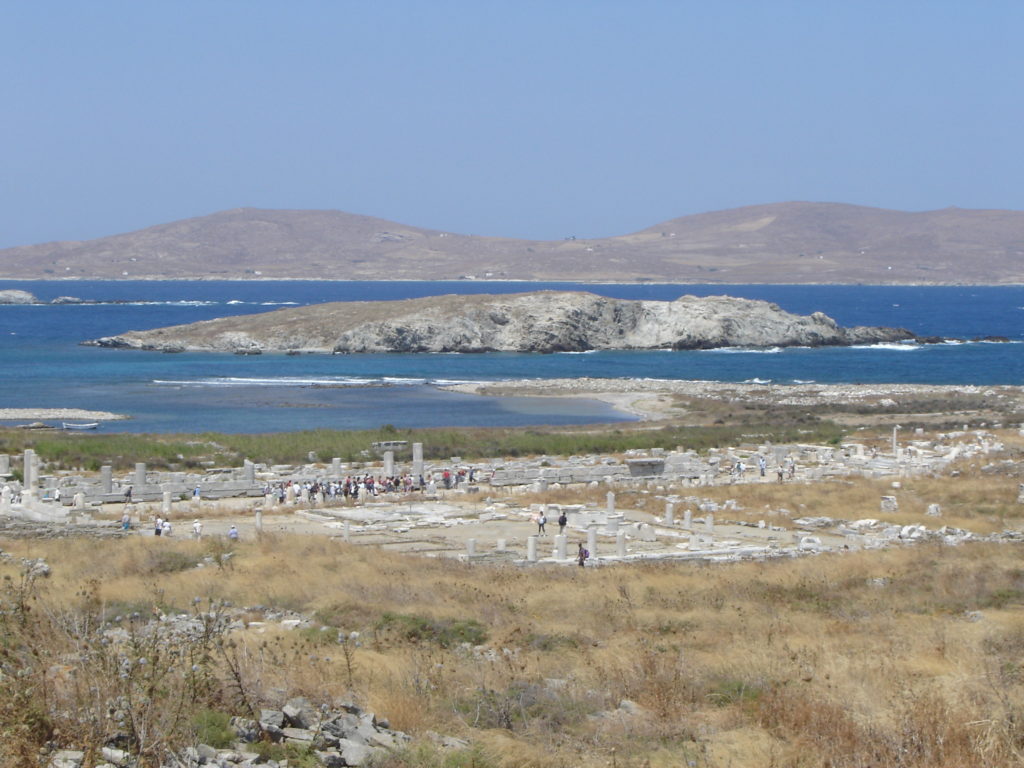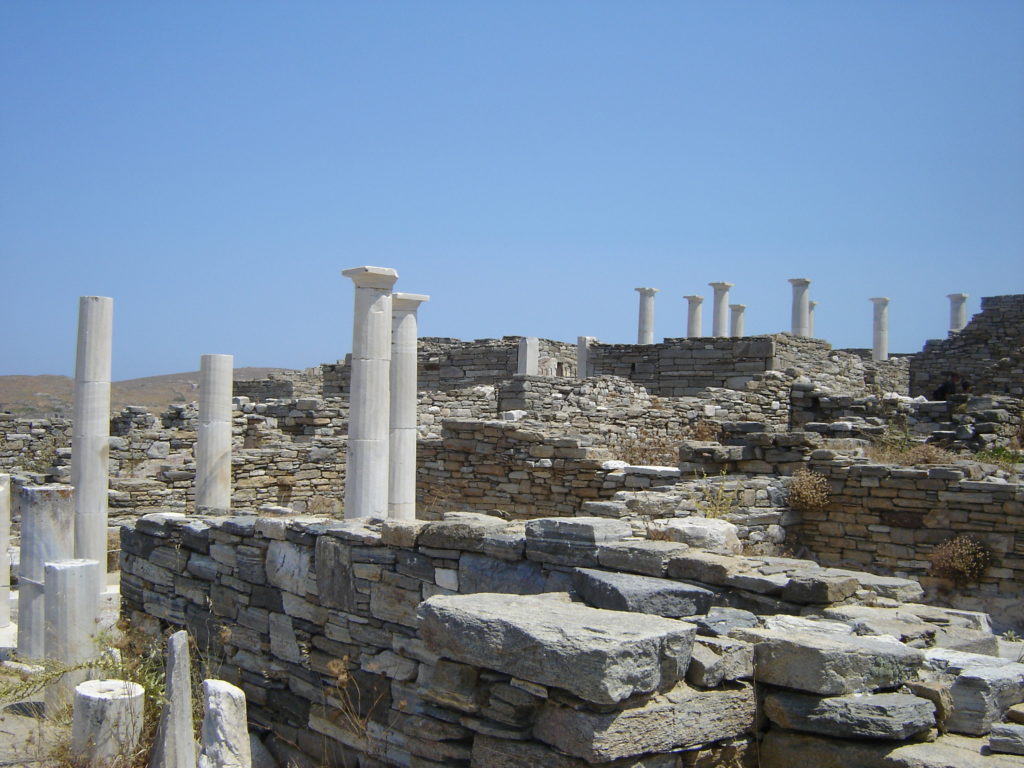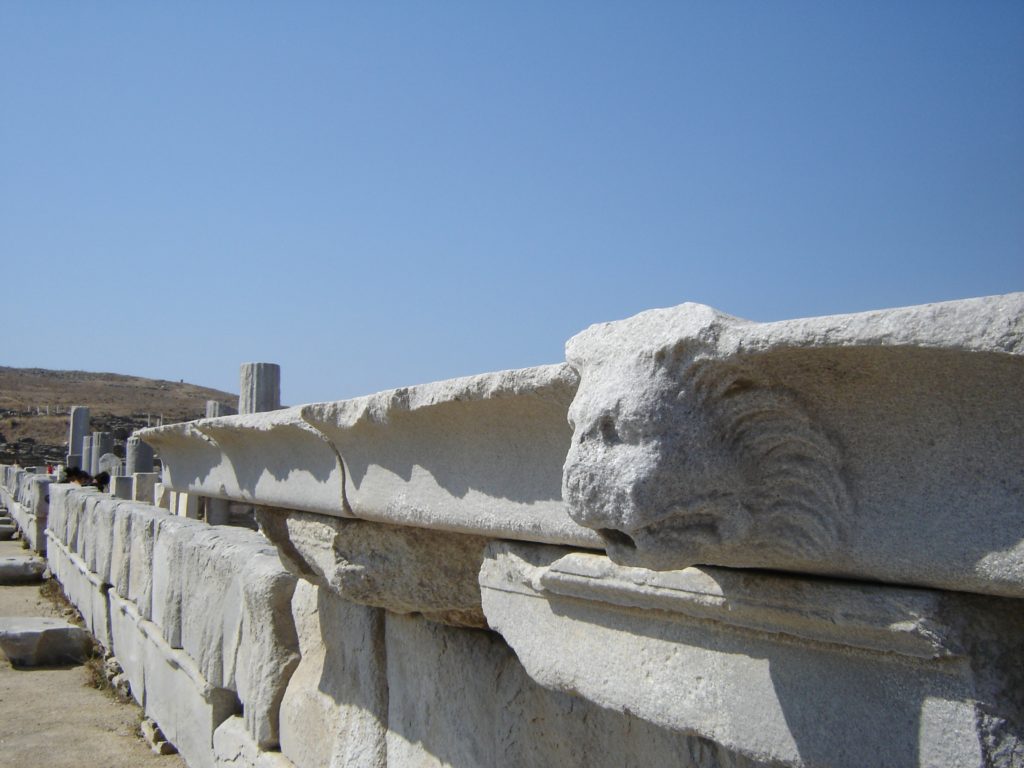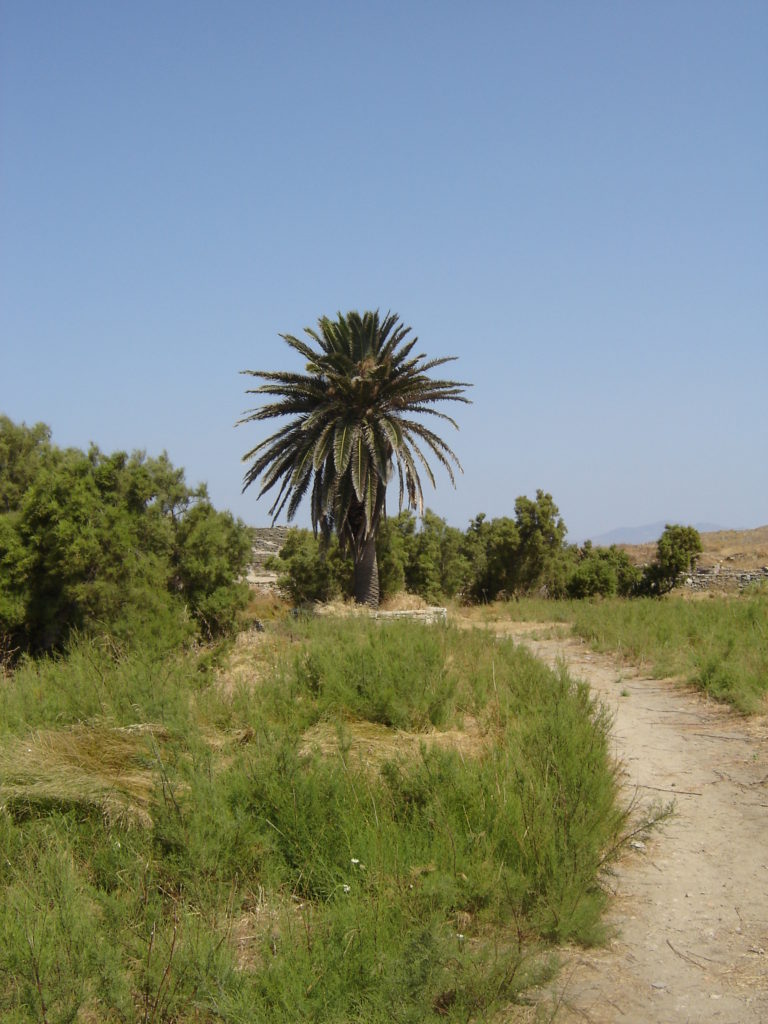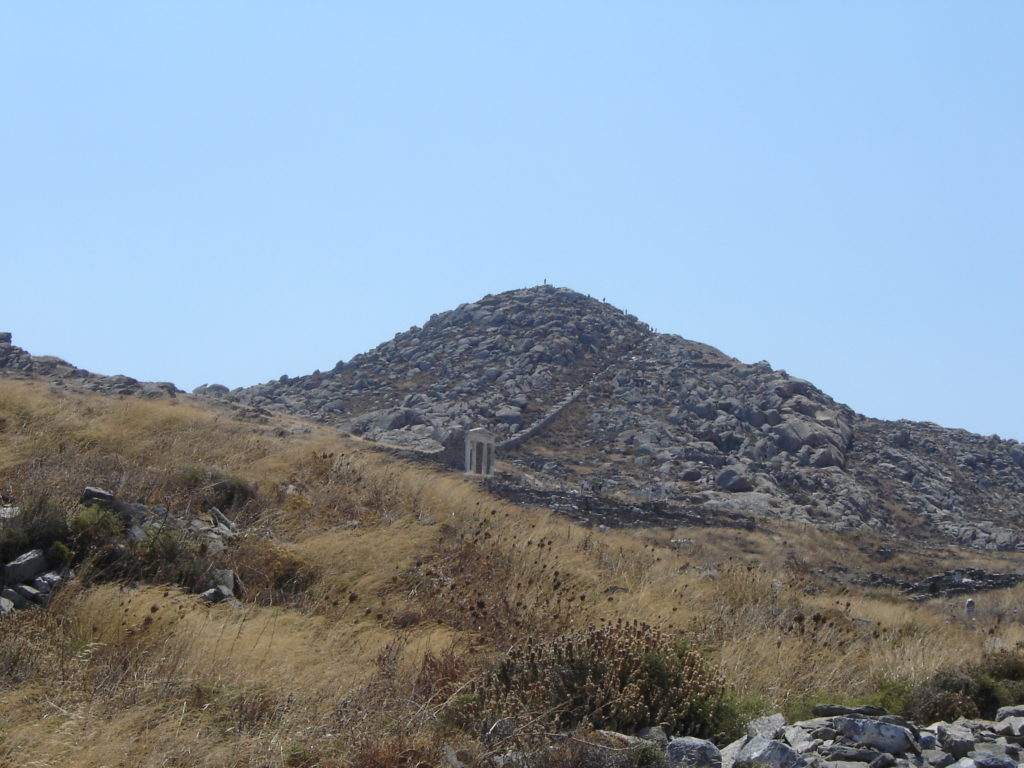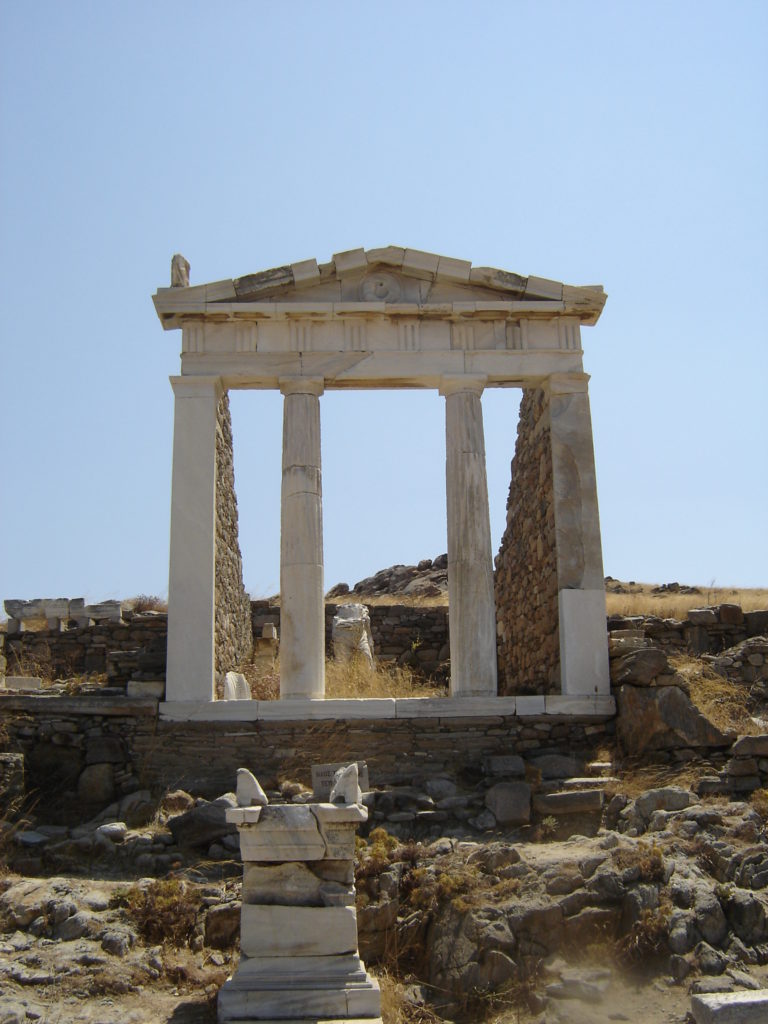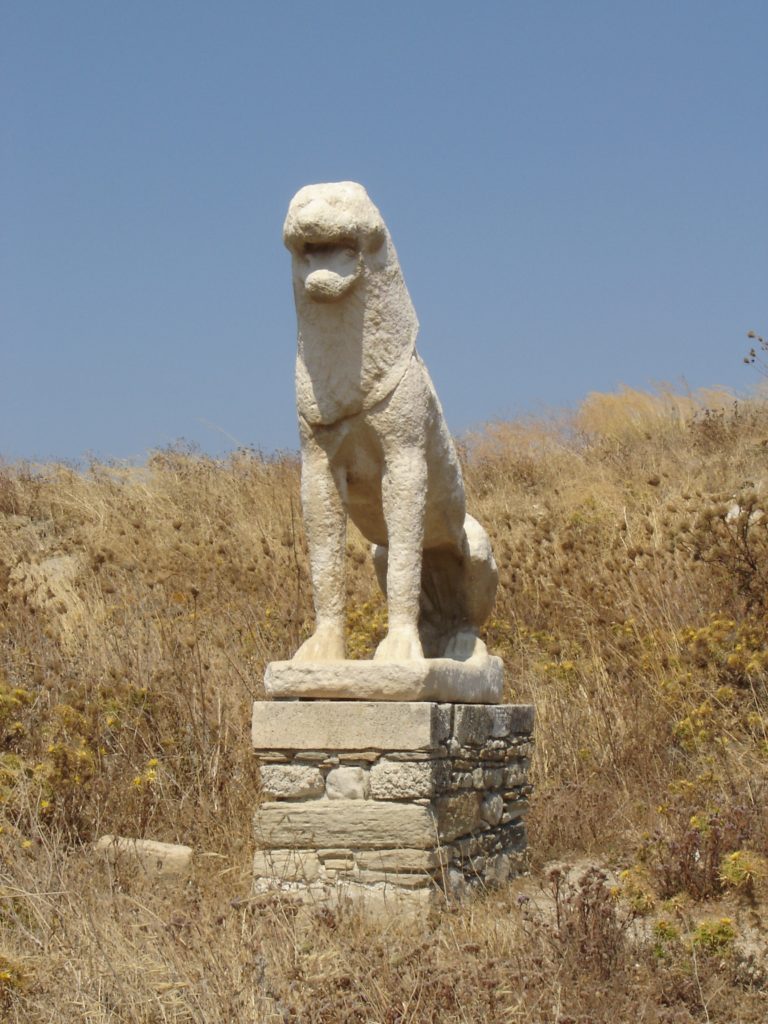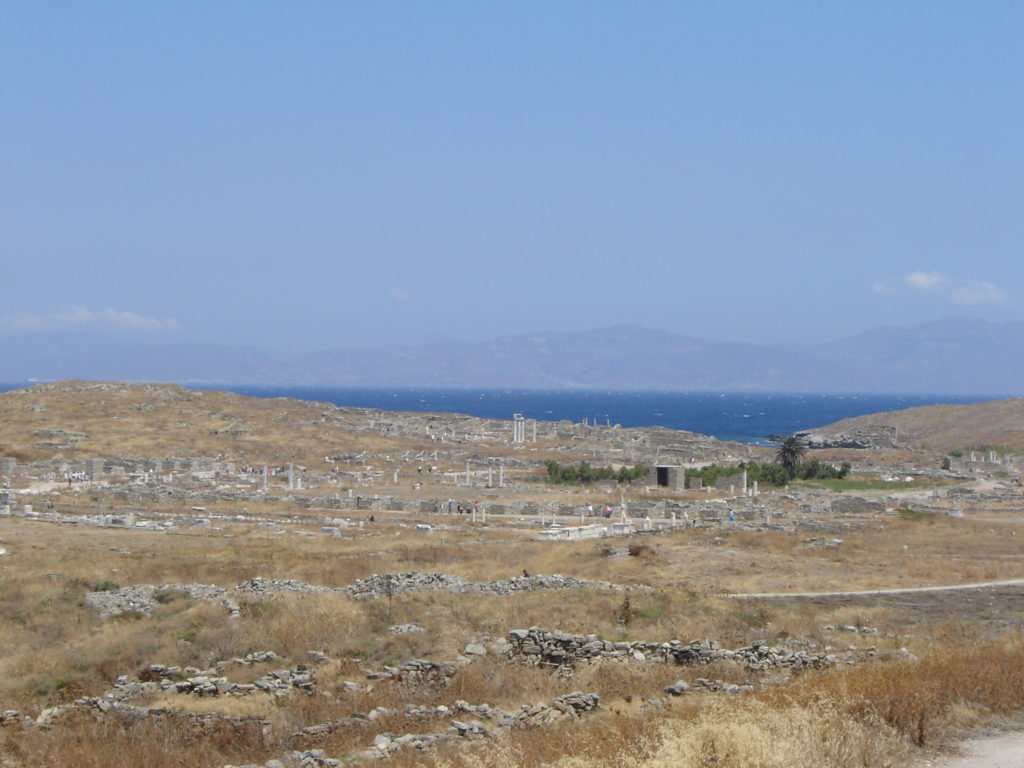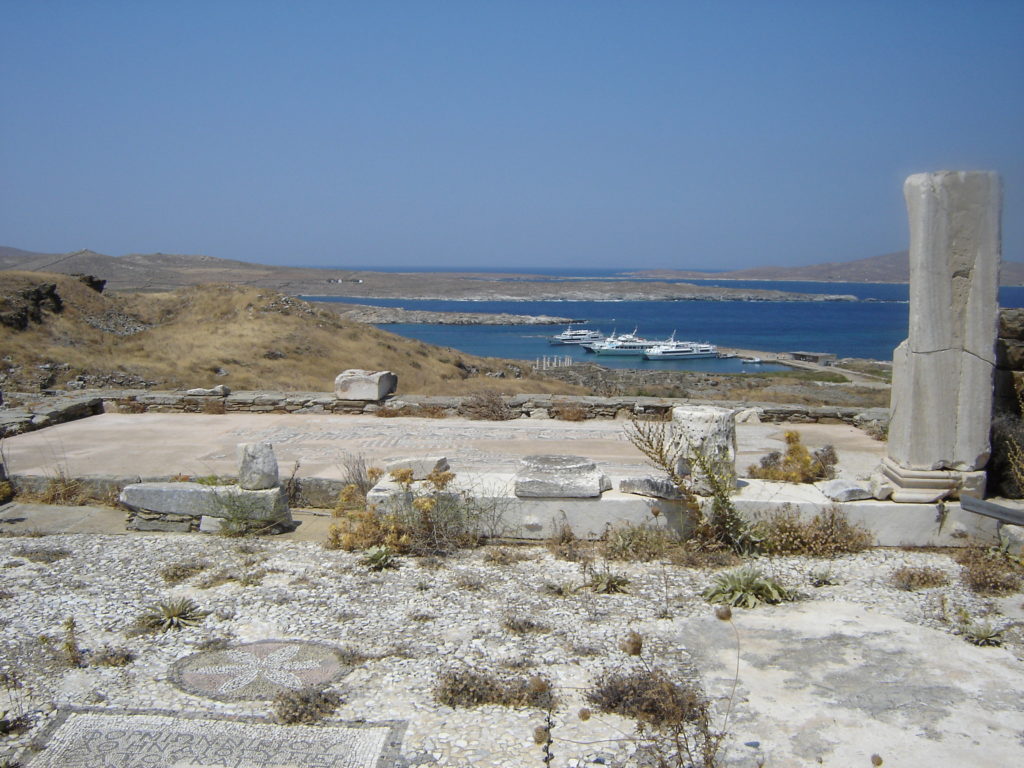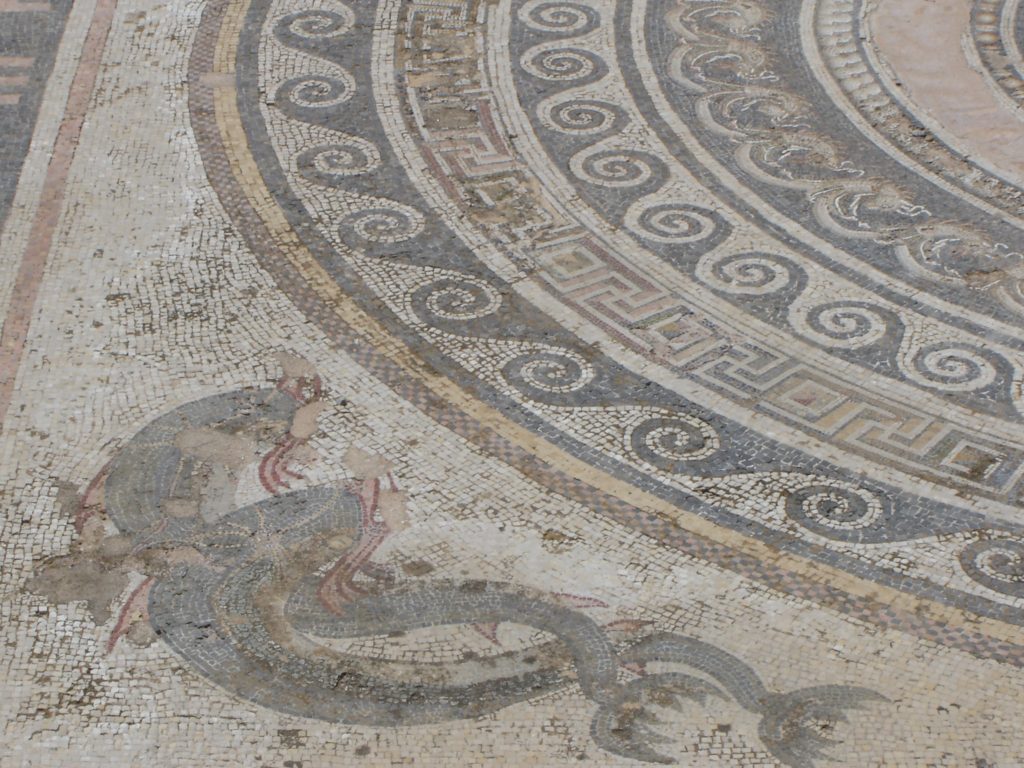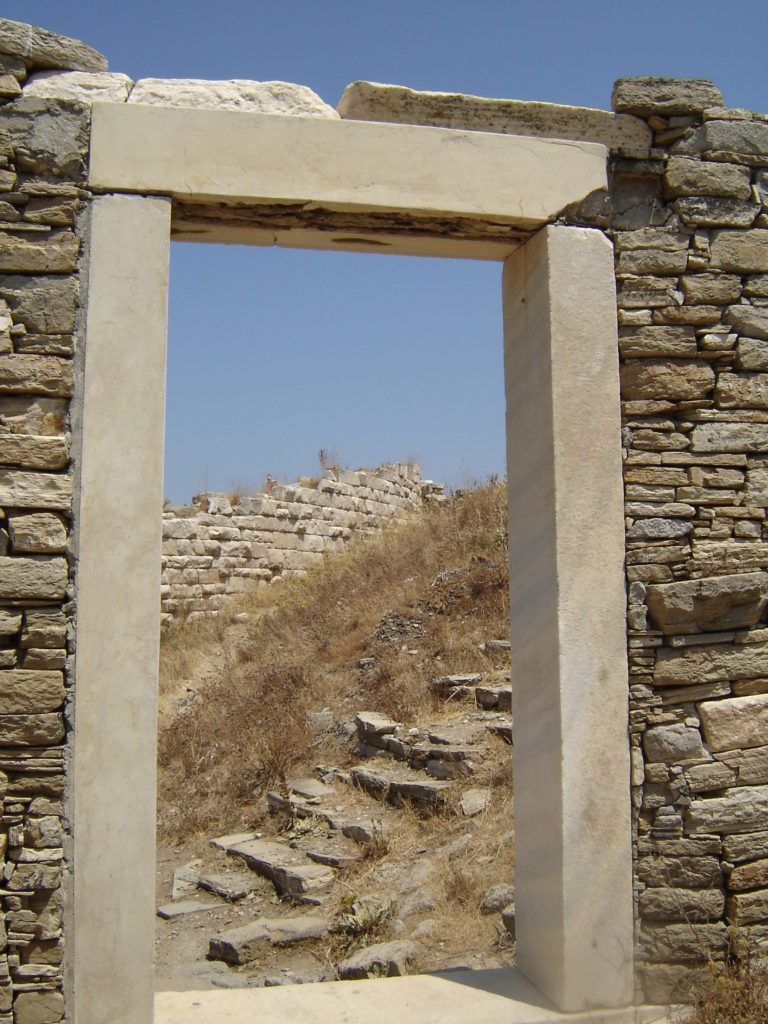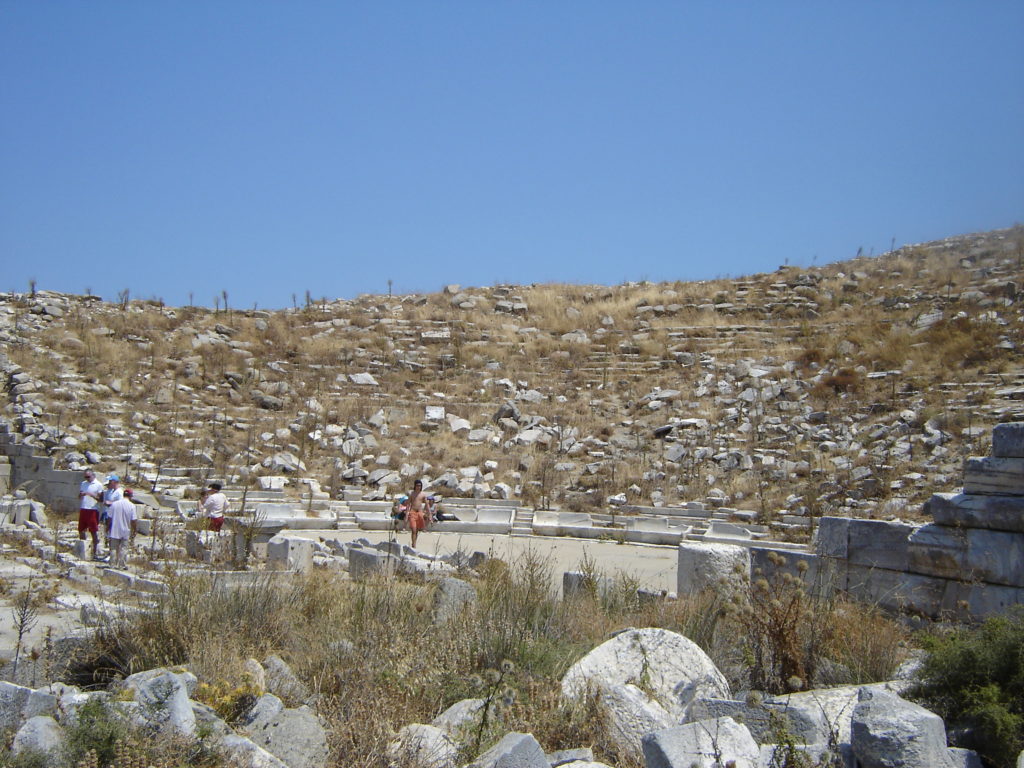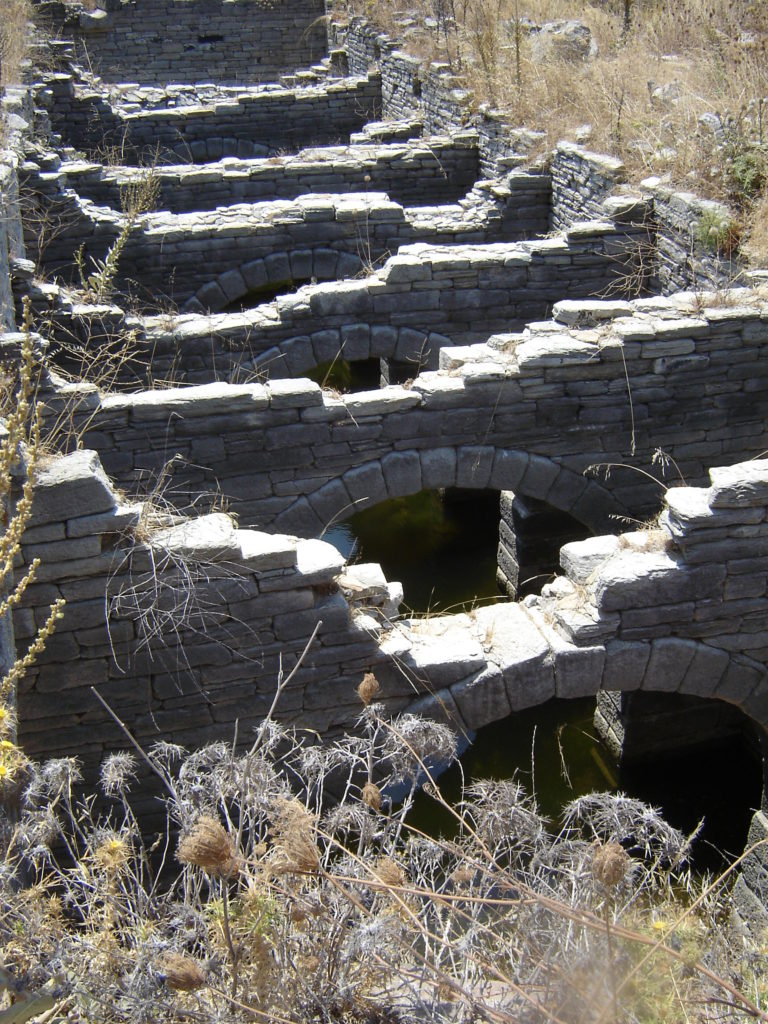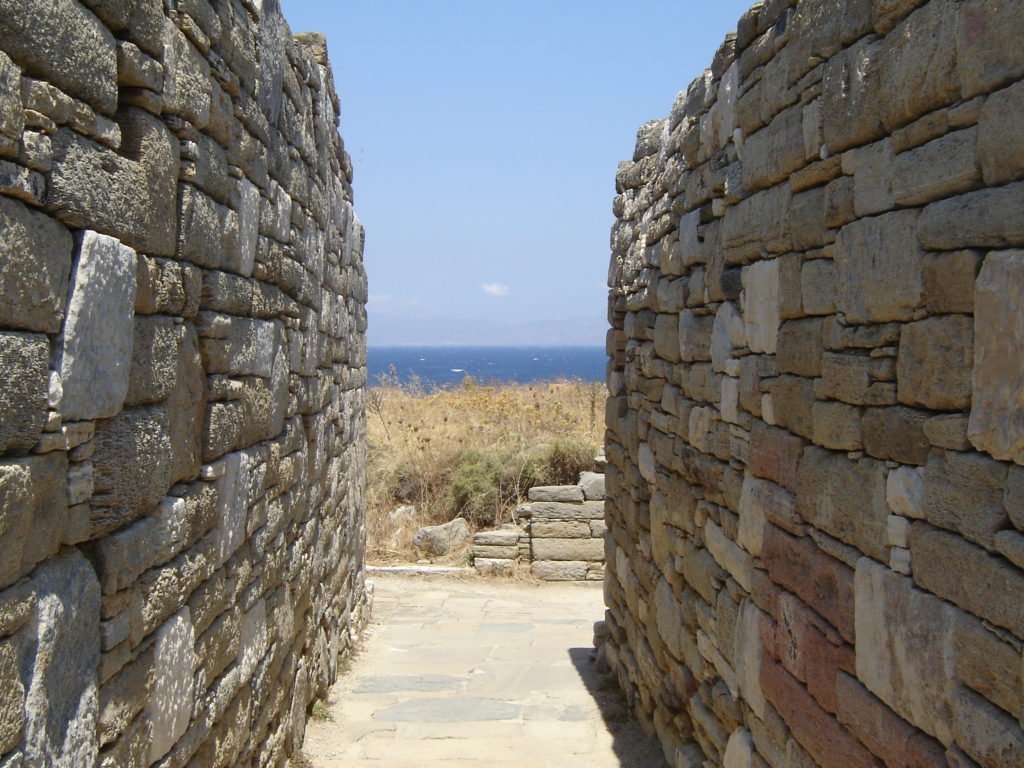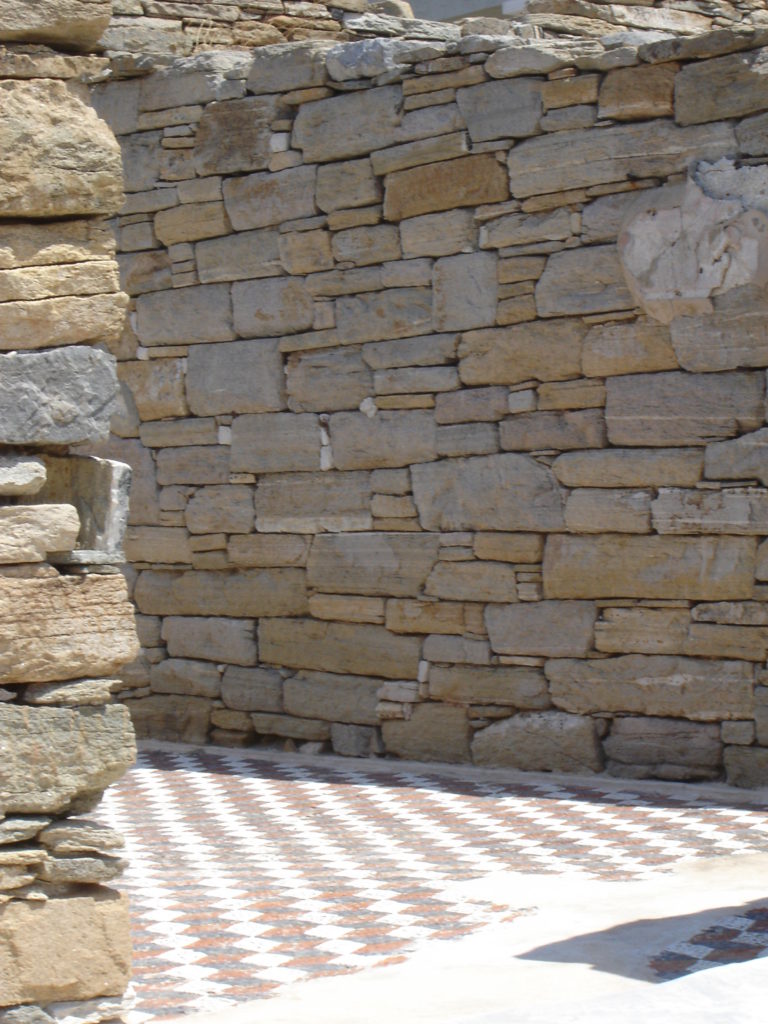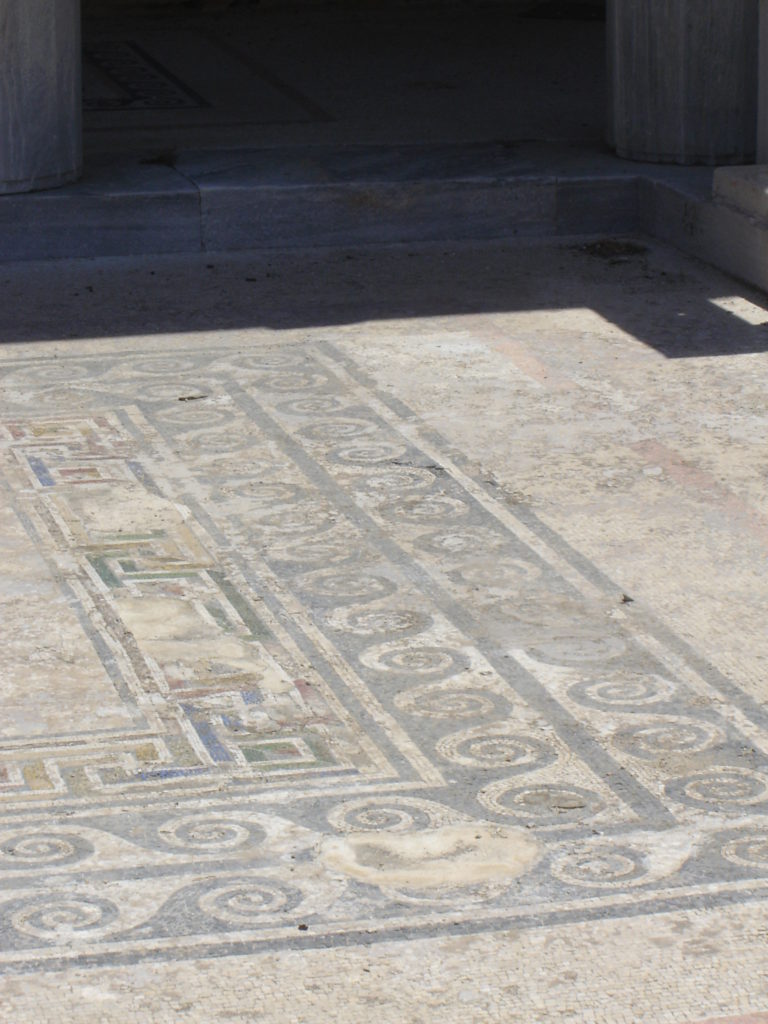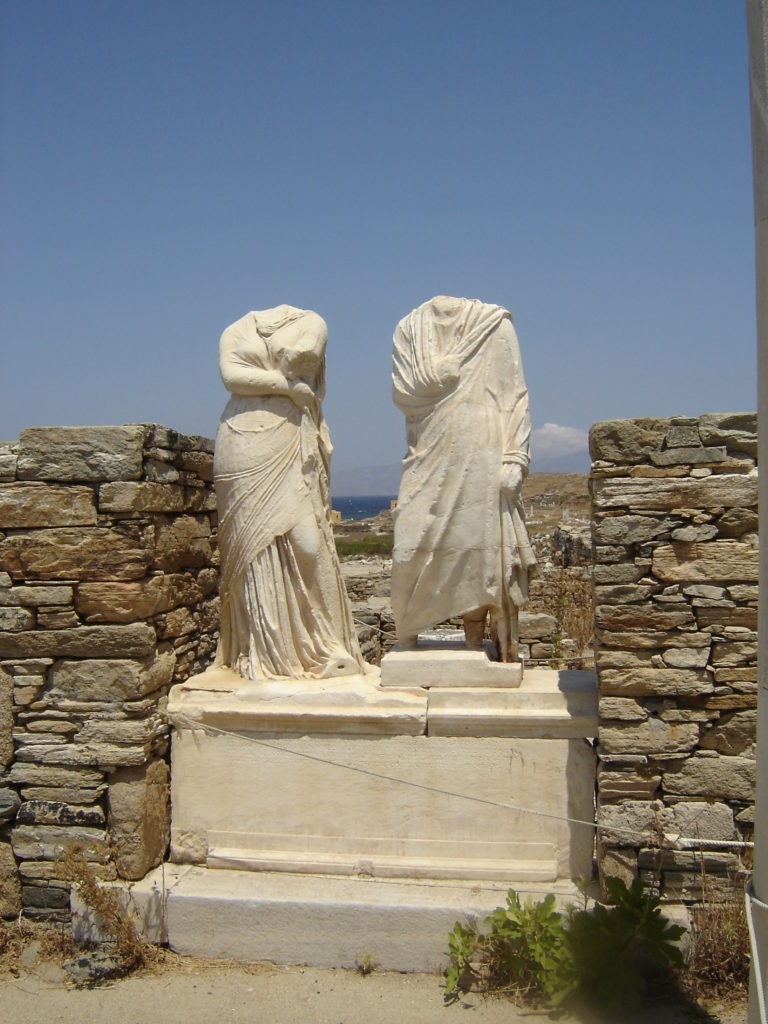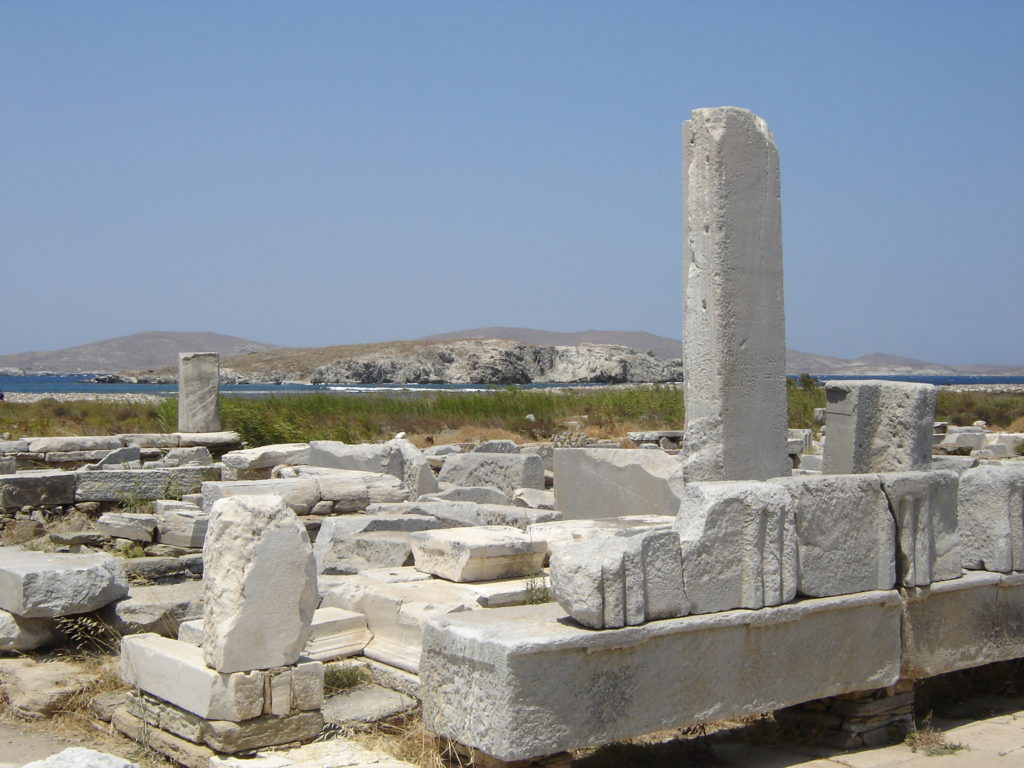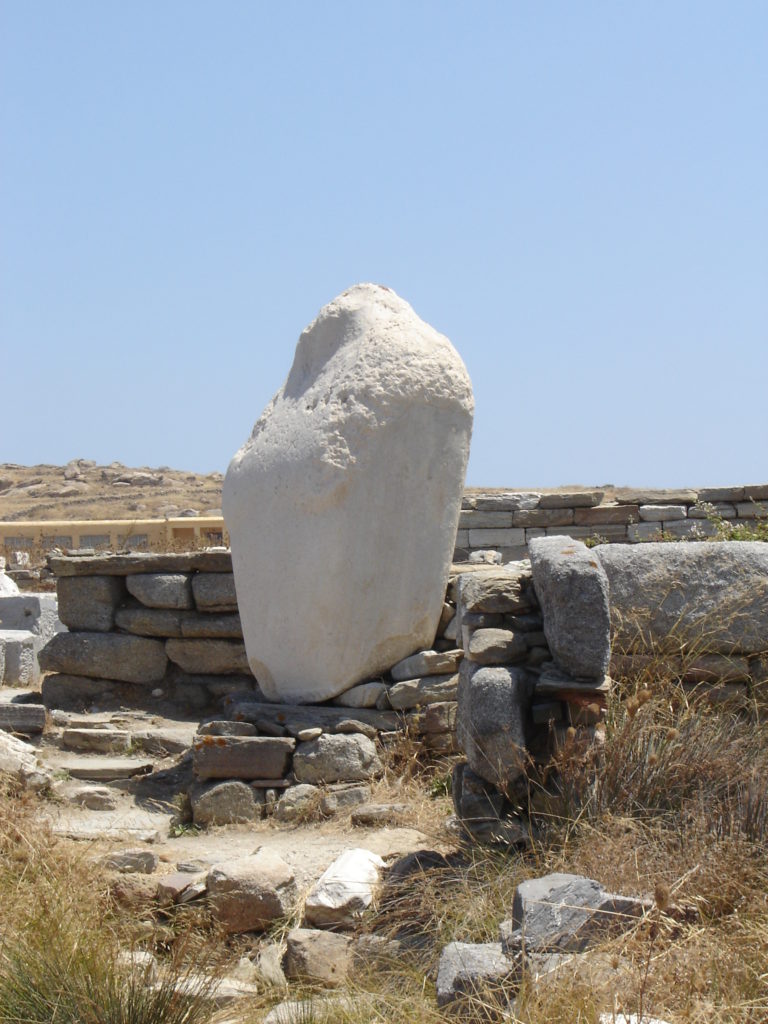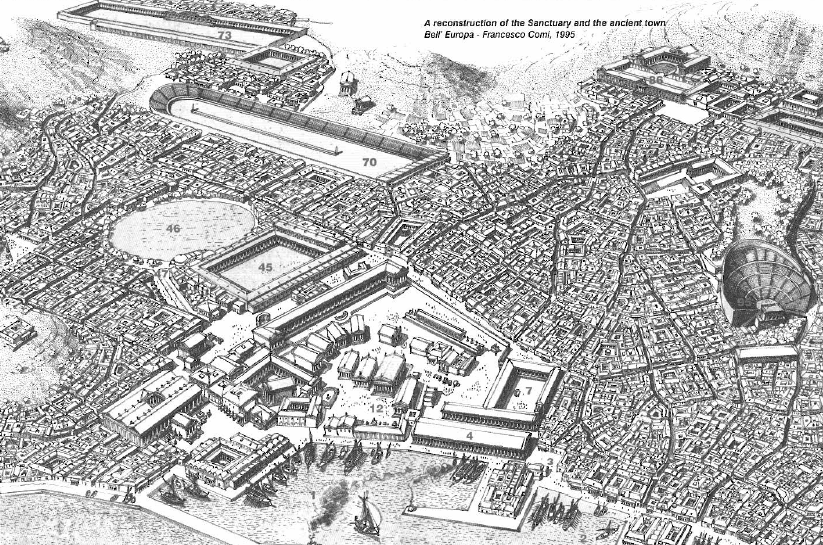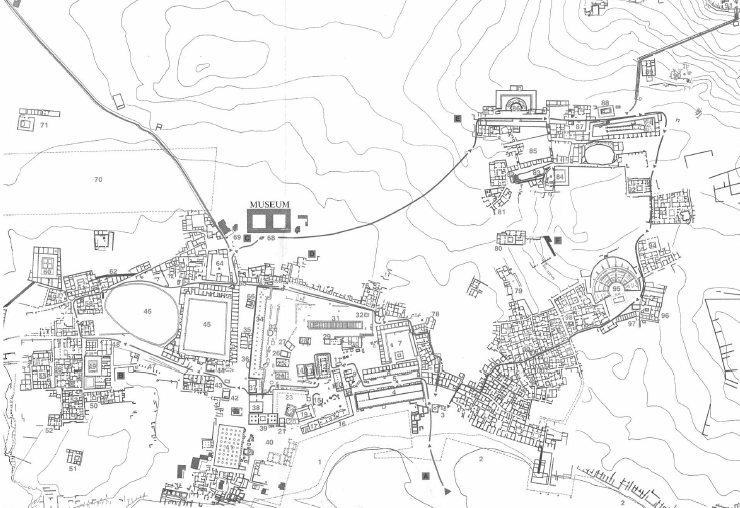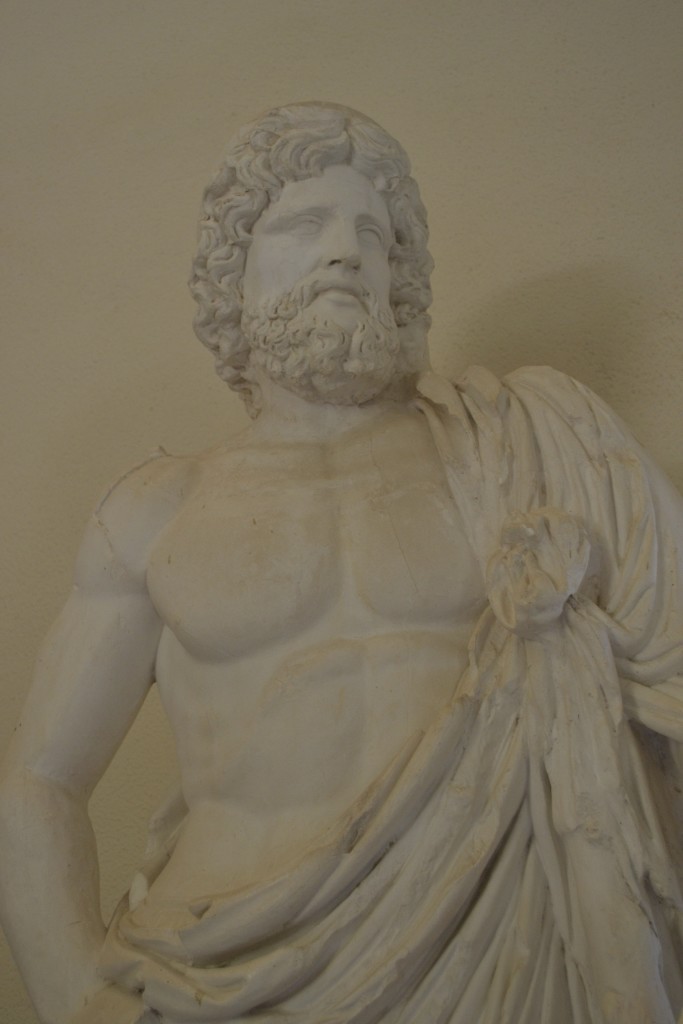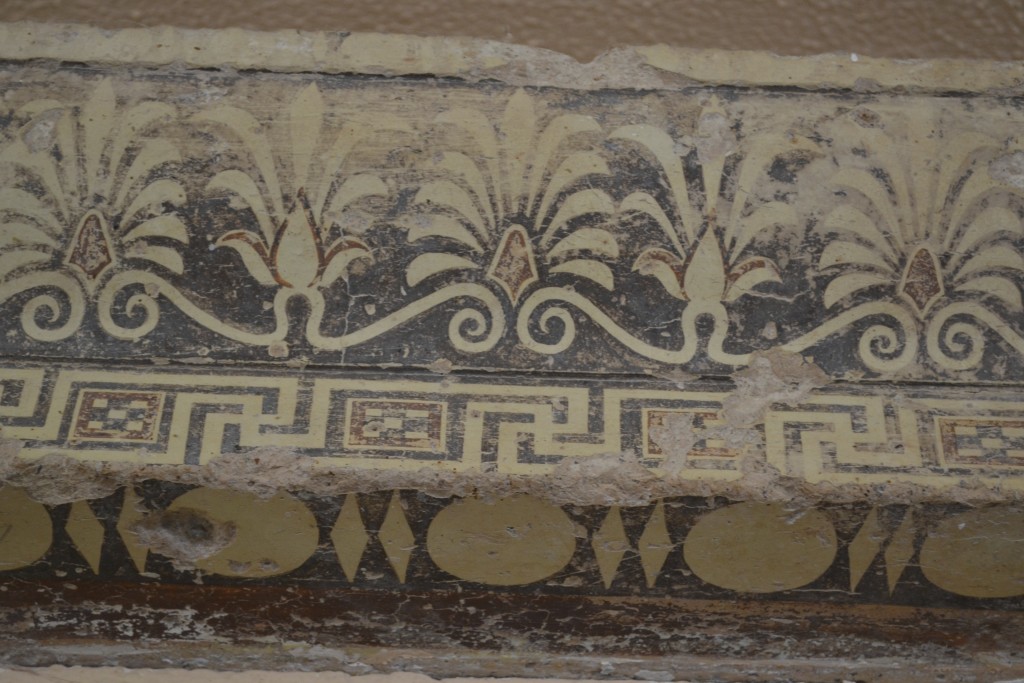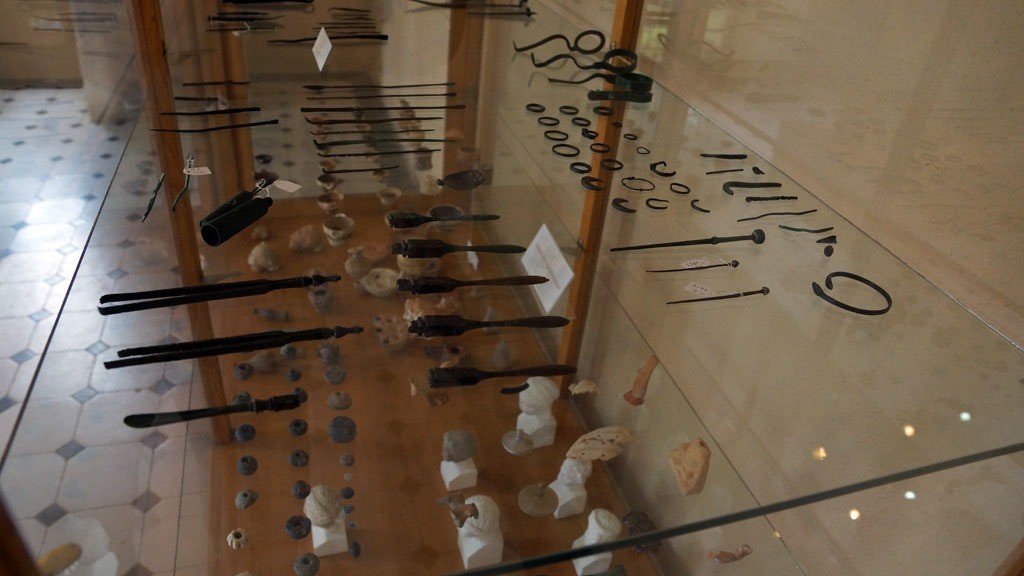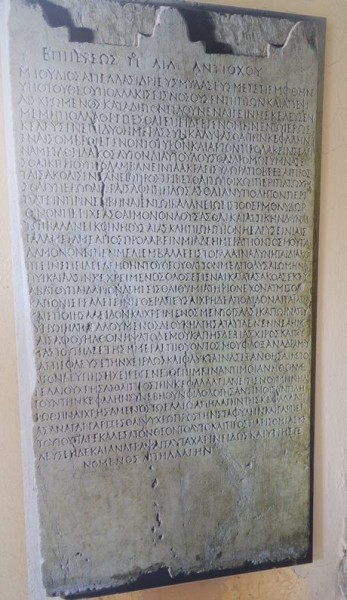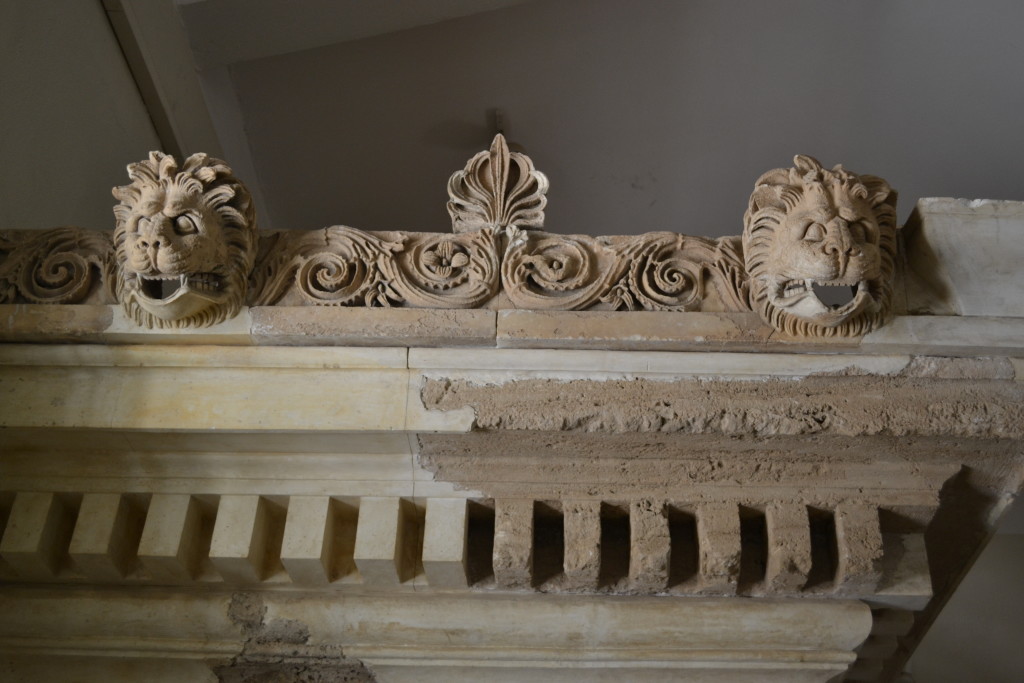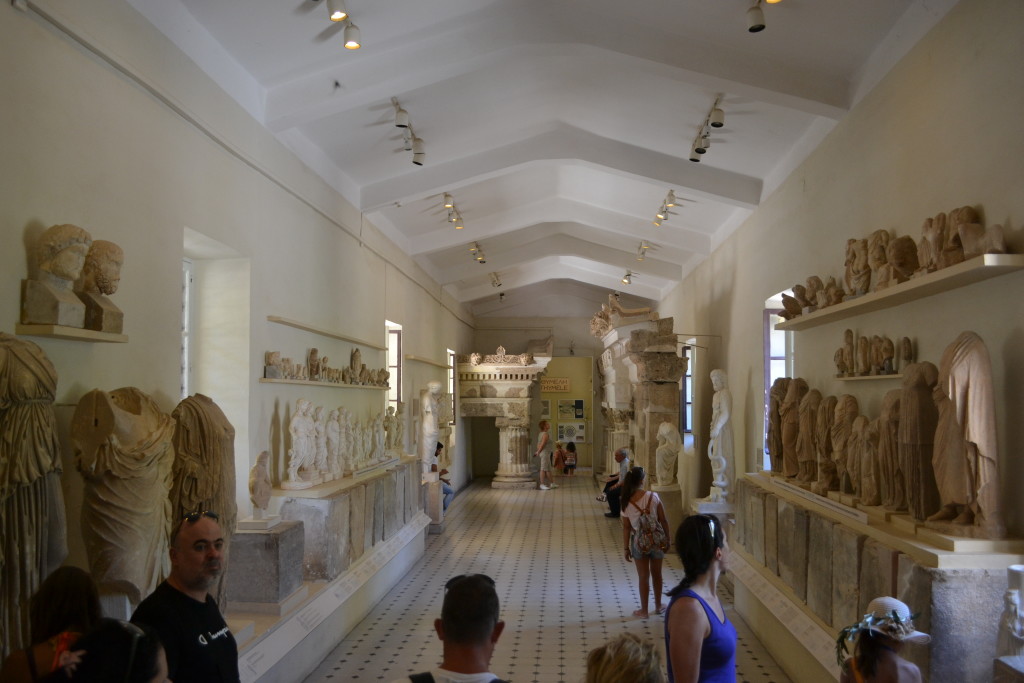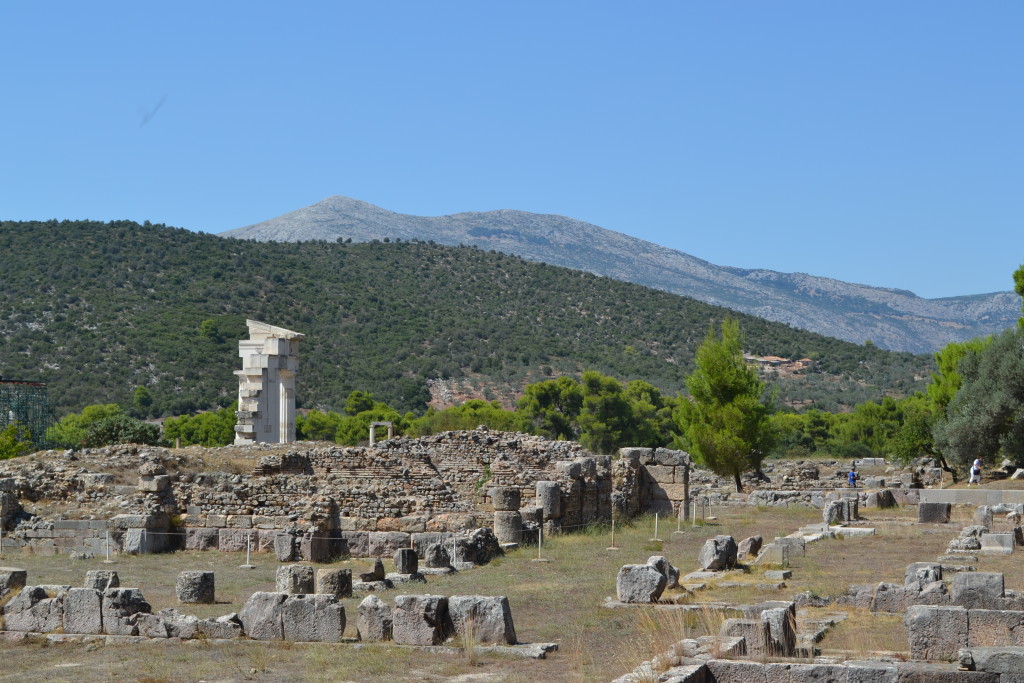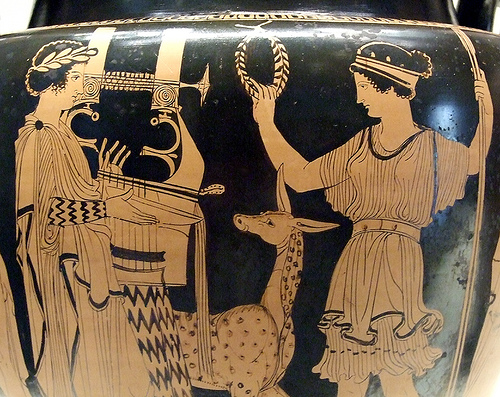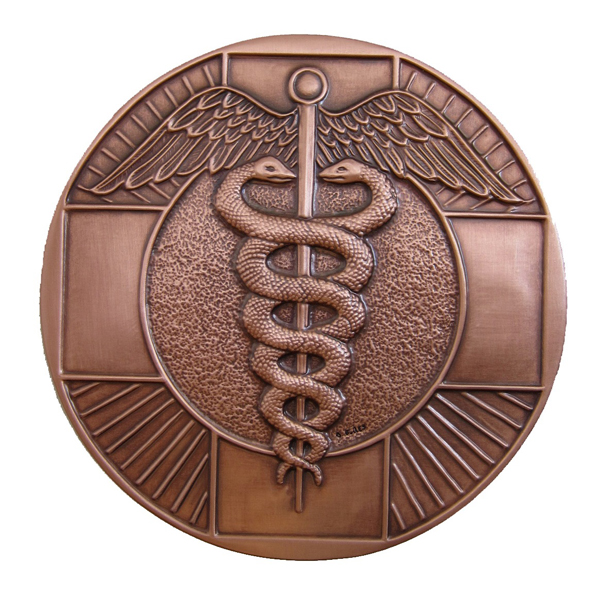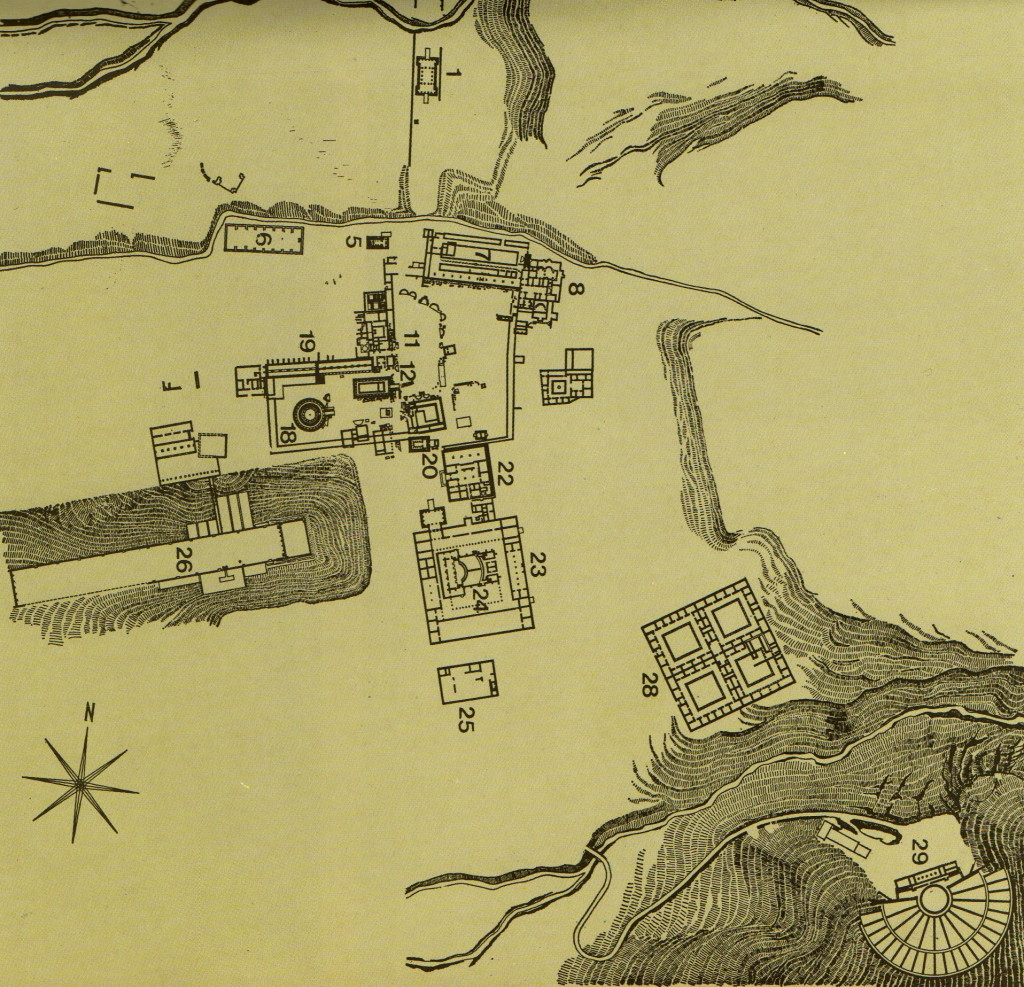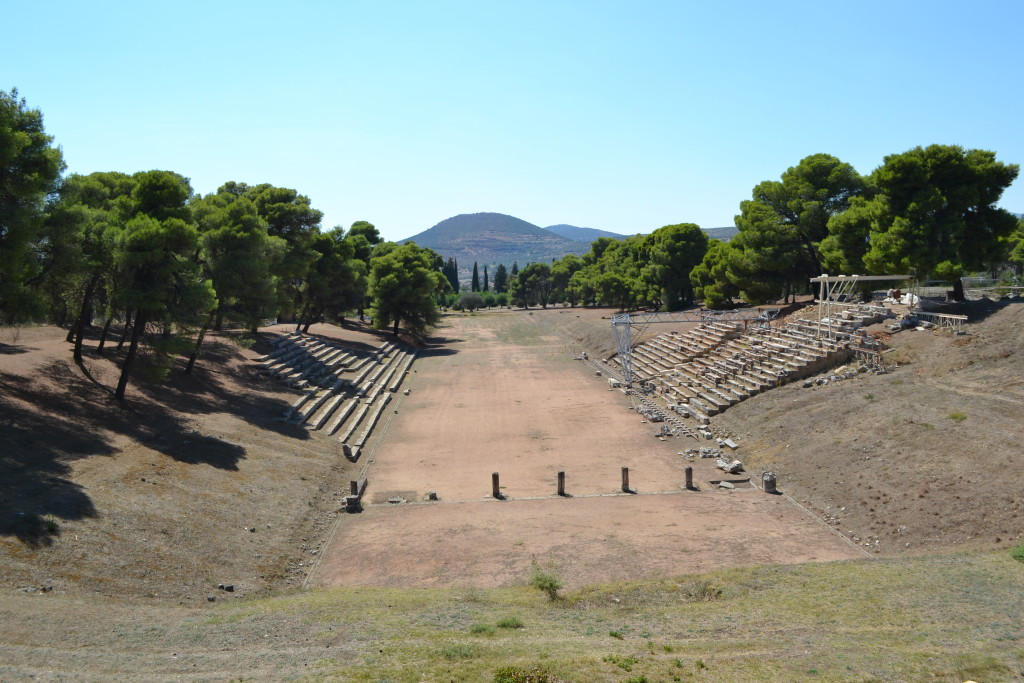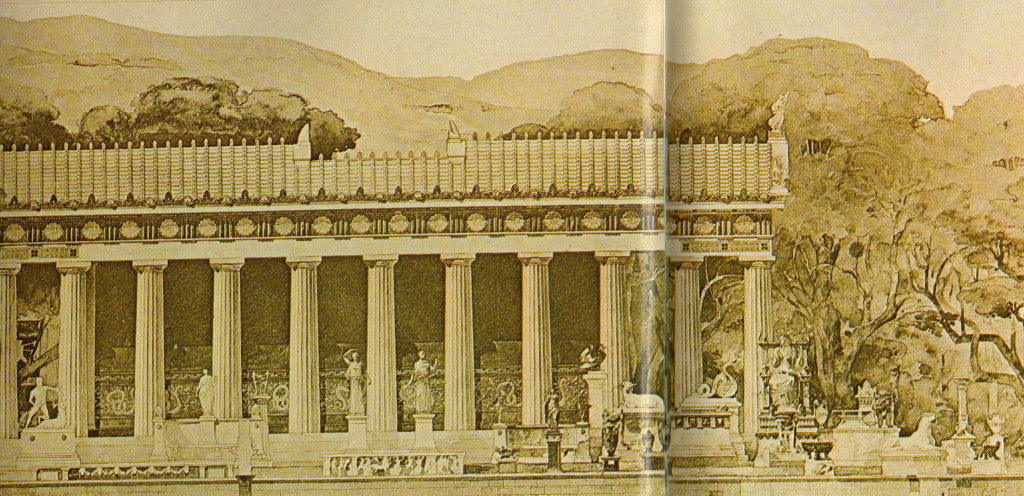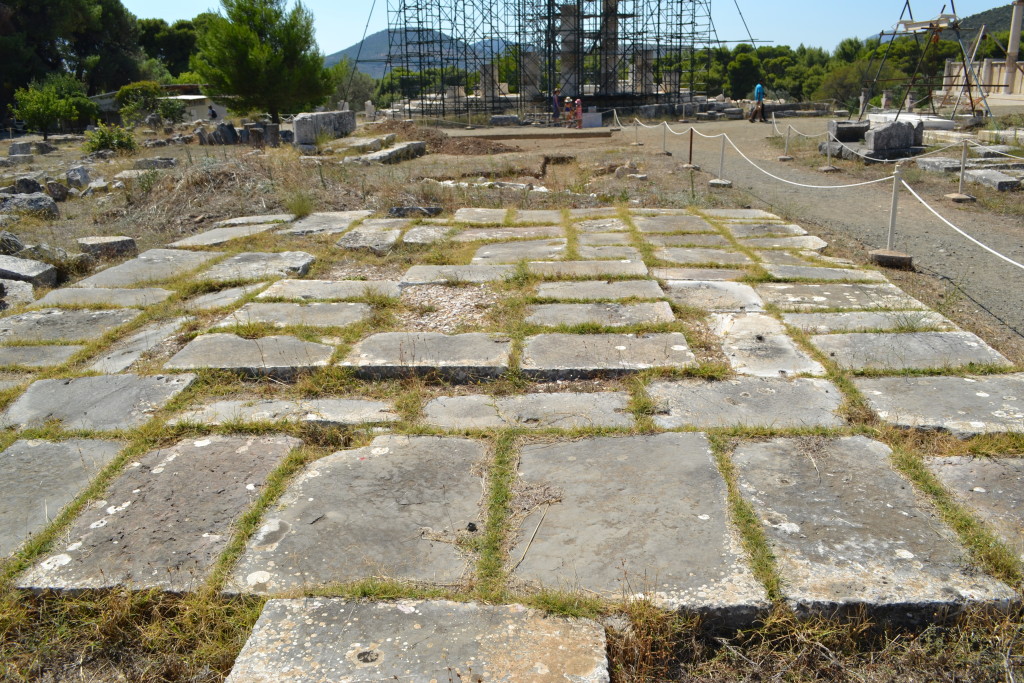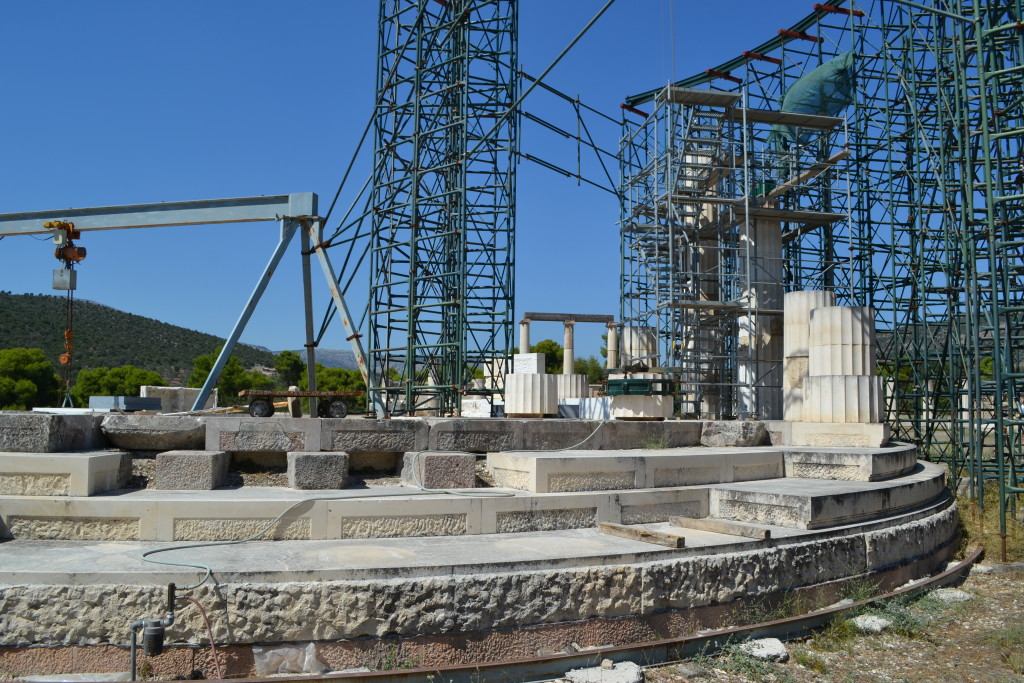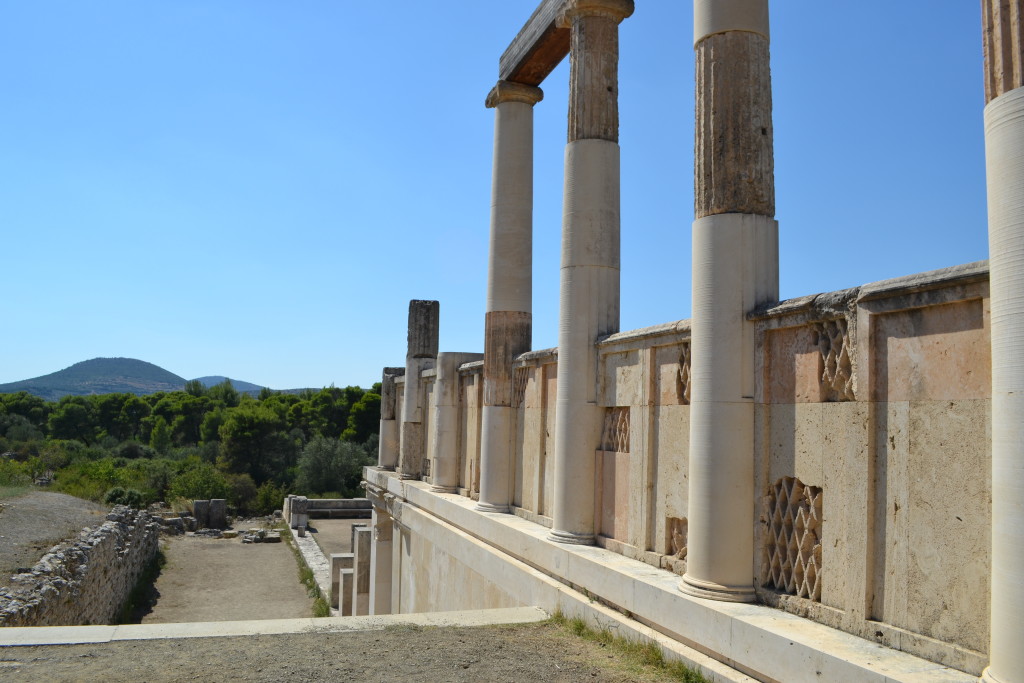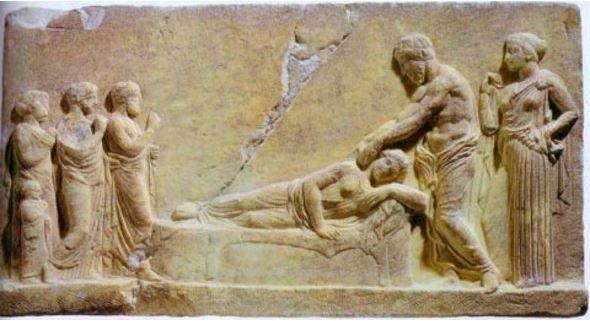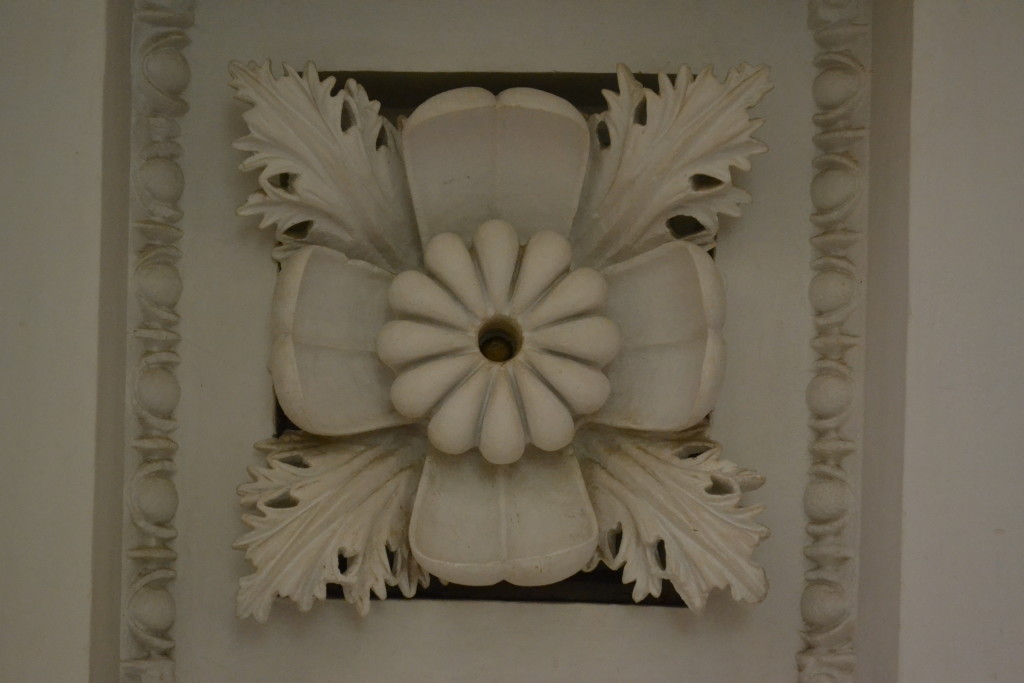Happy New Year, and welcome back to The World of An Altar of Indignities, the blog series in which we look at some of the research that went into our latest novel set in the Roman Empire.
If you missed Part V on the Roman Agora of Athens, you can read that by CLICKING HERE.
In Part VI, we’re going to be exploring two ancient sites that are not really known to the average tourist but which were important in the world of ancient Athens: the Hill of Ardittos, and the Temple of Artemis Agrotera.
We hope you find it interesting…
In deciding to set An Altar of Indignities in Athens, I came to discover a history of the neighbourhood of Pangrati which I had not been aware of. Our family home is located in Pangrati, where I had been coming for over twenty-five years, and yet it was the research for this dramatic and romantic comedy of ancient Rome and Athens that helped me to truly discover its ancient past.
Pangrati is located on the lower slopes of Mount Hymettos, just the other side of the sacred Ilissos river which now runs from the shadow of the Temple of Olympian Zeus and then curves around beneath the modern streets of Ardittou and Vasileos Konstantinou. It is a neighbourhood of local families who have inhabited it for generations, and who now share their streets with artists and immigrants. The streets are lined with apartment blocks where people and drying laundry hang over the edges of run-down balconies watching the world go by and listening to the chorus coming from the weekly farmer’s markets, or laiki as they are called.
To me, however, beneath the grubby veneer of graffiti, trash, and construction dust, I can now see the rich and wondrous history of this ancient neighbourhood. And I don’t mean the beautiful curves of the massive Panathenaic stadium at Pangrati’s edge, first built by Lycurgus in 339 B.C.E, which we mentioned in Part III of this blog series.
Rather, I mean the mysterious hills of Agras and Ardittos that flank the stadium in the Ilissos river valley, particularly, the Hill of Ardittos, and the Temple of Artemis Agrotera beside it.
These are the two sites we will focus on.

The Panathenaic Stadium at the edge of Pangrati, with the Hill of Ardittos on the right
The hill of Ardittos in Athens lies directly beside the Panathenaic Stadium, to your right as you stand before the ancient athletic monument, between Archimidous and Arditou streets. It is about two-hundred and thirty-five meters high and can only really be accessed from behind the stadium at the entrance on Archimidous street.
The Hill of Ardittos is a small green oasis in the middle of the chaotic city, and it is often overlooked, despite its guarded stance beside the Panathenaic Stadium. Its pathways and slopes are dotted with massive agave plants and eucalyptus, cacti, pine, olive, almond, cypress and carob trees where crows – the birds of Apollo – keep a watchful eye.
Admittedly, I had walked by the hill many times over the years, simply noting its ancient slopes, the gnarled vegetation and the rocks protruding from beneath the soil. To be sure, the fence around it dissuaded me before, even as I walked by the hill on my way to the Temple of Olympian Zeus and the neighbourhood around the Acropolis, the Plaka.
Ardittos is a community park where locals jog, walk their dogs, workout, make-out, sneak a peek of paid events in the stadium, or just hold to a little peace at the heart of the city.
If you can find your way there through the steep and winding roads and pathways of Pangrati, you are rewarded with magnificent views of the stadium, the Acropolis, and the Olympeion, the Temple of Olympian Zeus.

View of the Acropolis from the Hill of Ardittos (photo source: ekathimerini.com – Irene Anastasiadis)
Apparently, Ardittos was named after a hero of ancient Athens named, Arditis. In ancient times, there were several sanctuaries in the vicinity, along the shores of the Ilissos, including sanctuaries of the Nine Muses, Pan, and Herakles.
But the Hill of Ardittos itself was also a religious and legal centre. It is believed that there were temples to Pan, Hecate, and Hera on or near the hill, but the remains that are visible today are thought to belong to the Temple of Tyche, the Goddess of Luck, who was a daughter of the Titans, Oceanus and Tethys.

Remains of the Temple of Tyche on the Hill of Ardittos (Wikimedia Commons)
Archaeologists and historians believe it possible that the Temple of Tyche on Ardittos was the site of offerings to Demeter and Persephone during the lesser Eleusinian Mysteries when piglets were offered, purified in the Ilissos River beforehand. There were also rites carried out here in honour of Dionysos during the festival of the Anthesteria.
There is no doubt that the Hill of Ardittos holds many mysteries, including a tradition that Herodes Atticus, that great Greco-Roman patron of the city, may even have been buried on it.
As I walk around Pangrati, a part of me doesn’t see the broken marble sidewalks or the apartment buildings that jut up to provide shade from the hot Athenian sun. Rather, I imagine and see the wooded lower slopes of Hymettos thick with pine and cypress, bees flitting about wild thyme, and boar crashing through the scrub while ancient Athenians made their offerings, or herded their goats and sheep on the mountainside.
It must have been beautiful and calm.

Artemis – The Huntress
According to legend, it was not only the Athenians who roamed the wooded slopes of Ardittos, Agras, and Hymettos.
This was also said to be the domain of Artemis Agrotera, the Huntress.
Just the other side of the Hill of Ardittos, there is another site that provides one of the settings for An Altar of Indignities, and that is the Temple of Artemis Agrotera.
Pausanias described the setting in the second century C.E:
The rivers that flow through Athenian territory are the Ilissos and its tributary the Eridanus, whose name is the same as that of the Celtic river. This Ilissos is the river by which Oreithyia was playing when, according to the story, she was carried off by the North Wind. With Oreithyia he lived in wedlock, and because of the tie between him and the Athenians he helped them by destroying most of the foreigners’ warships. The Athenians hold that the Ilissos is sacred to other deities as well, and on its bank is an altar of the Ilissian Muses. The place too is pointed out where the Peloponnesians killed Codrus, son of Melanthus and king of Athens.
Across the Ilissos is a district called Agrae and there is a temple of Artemis Agrotera (the Huntress). They say that Artemis first hunted here when she came from Delos, and for this reason the statue carries a bow. A marvel to the eyes, though not so impressive to hear of, is a race-course of white marble, the size of which can best be estimated from the fact that beginning in a crescent on the heights above the Ilissos it descends in two straight lines to the river bank. This was built by Herodes [Herodes Atticus], an Athenian, and the greater part of the Pentelic quarry was exhausted in its construction.
(Pausanias; Description of Greece, 1.19)

Antiquarian plate of facade of the Temple of Artemis Agrotera (by Stuart and Revett)
When we went in search of the Temple of Artemis Agrotera, it was on a hot Athenian morning when the temperature had already reached a blistering 45 degrees Celsius. Our path took us down the hill from Pangrati to the back of the Panathenaic Stadium, along Archimidous street, and then past the entrance to the Hill of Ardittos. We sweat our way up and down the steep side streets of the ancient district of Agrae until, arriving at Ardittou street, we found a lot where no apartment blocks stood.
We had arrived at the site of the Temple of Artemis Agrotera to find this:

Modern site of the Temple of Artemis Agrotera wit the Acropolis in the background
It was indeed a shock to behold this, but before we go any further, here is bit of history of the once-graceful temple that stood on this site…
The Temple of Artemis Agrotera was built between 435-430 B.C.E above the left or southern bank of the Ilissos river. But the temple was not only built here because this wood was thought to be the goddess’ first hunting ground.
Apparently, before the great Battle of Marathon in 490 B.C.E, when the Athenians crushed a more numerous invading Persian force, the Athenians made a vow to Artemis Agrotera – they were going on the hunt, after all! – that a goat would be sacrificed to her for every enemy killed in battle. The Athenians slew 6,400 Persian invaders.
Needless to say, the Athenians could not find enough goats to fulfill their vow to the goddess, but 500 goats were offered every year on the anniversary of the battle in early September.
For when the Persians and their followers came with a vast array to blot Athens out of existence, the Athenians dared, unaided, to withstand them, and won the victory. And while they had vowed to Artemis that for every man they might slay of the enemy they would sacrifice a goat to the goddess, they were unable to find goats enough; so they resolved to offer five hundred every year, and this sacrifice they are paying even to this day.
(Xenophon, Anabasis, 3.2)

Antiquarian plate of the plan of the Temple of Artemis Agrotera (by Stuart and Revett)
The temple to honour Artemis Agrotera, who had helped the Athenians, was built some years later by Callicrates, who also designed the Temple of Athena Nike on the Acropolis, and for which it provided the precedent.
There were no precise, ancient descriptions of the temple of Artemis Agrotera. Thankfully, in the 1750s, two curious architects by the names of James Stuart and Nicholas Revett, went in search of the temple and recorded the details of what they saw, sketching what they could. Thanks to them, we know what the temple looked like.

Antiquarian plate of Temple of Artemis Agrotera architectural details (by Stuart and Revett)
On the southern bank of the Ilissos… stands a little Ionic temple, the mouldings of which differ much from all the examples of that order, hitherto published; their forms are extremely simple, but withal so elegant, and the whole is so well executed, that it may doubtless be reckoned among those works of antiquity which best deserve our attention.
(Stuart and Revett, The Antiquities of Athens, Volume l, 1762, Chapter 2, Page 7)
From Revett and Stuart’s records, it was a simple temple with four Ionic columns on the front porch, or tetrastyle, as well as four at the back. It had a deep pronaos, and a square cella, or inner sanctum, something that is thought to be unique to this temple. There was also a continuous frieze about the temple, fragments of which are now in the Staatliche Museum in Berlin.
There was also a temple precinct created by a low retaining wall, remains of which, along with parts of the temple foundations, are visible on-site today.
As happened with many ancient temples, the Temple of Artemis Agrotera was converted into a Christian basilica in the 5th century C.E. Sadly, it was later destroyed for building materials by the Ottomans when they occupied Athens.

Gouache painting of the Temple of Artemis Agrotera’s ruins (by Stuart)
As you stand on the site today, it is difficult to imagine the temple as it once was, on the edge of the wood, offerings crowding its altars, inside and out. Where the sacred Ilissos once flowed, sparkling in the Athenian sun, cars and mopeds now shake the ground. But you can still stand at the edge of the ancient wall of the temple precinct and gaze across the modern layer of the city to see the Temple of Olympian Zeus with the soaring beacon of the Acropolis beyond. What a site it must have been!

3D recreation of the Temple of Artemis Agrotera with the Temple of Olympian Zeus and the Acropolis in the background (Dimitris Tsalkanis & Chrysanthos Kanellopoulos – www.AncientAthens3d.com)
When you are finished reading this article, be sure to watch our video tour of this archaeological site!
In researching and writing An Altar of Indignities, I came to discover the Hill of Ardittos and the Temple of Artemis Agrotera, and their importance in the mythology and history of the landscape of ancient Athens. Both became settings in the book and the story is the richer for it.
When I make my way around Athens today, I don’t follow the names of streets, but rather use the city’s ancient sites as my markers to guide me to where I want to go. Now, in addition to the stadium, I also have the Hill of Ardittos and the Temple of Artemis Agrotera to guide me on my way.
Thank you for reading.
An Altar of Indignities is now available in ebook, paperback and deluxe hardcover edition from all major online retailers, independent bookstores, brick and mortal chains, and your local public library.
CLICK HERE to buy a copy and get ISBN#s information for the edition of your choice.

